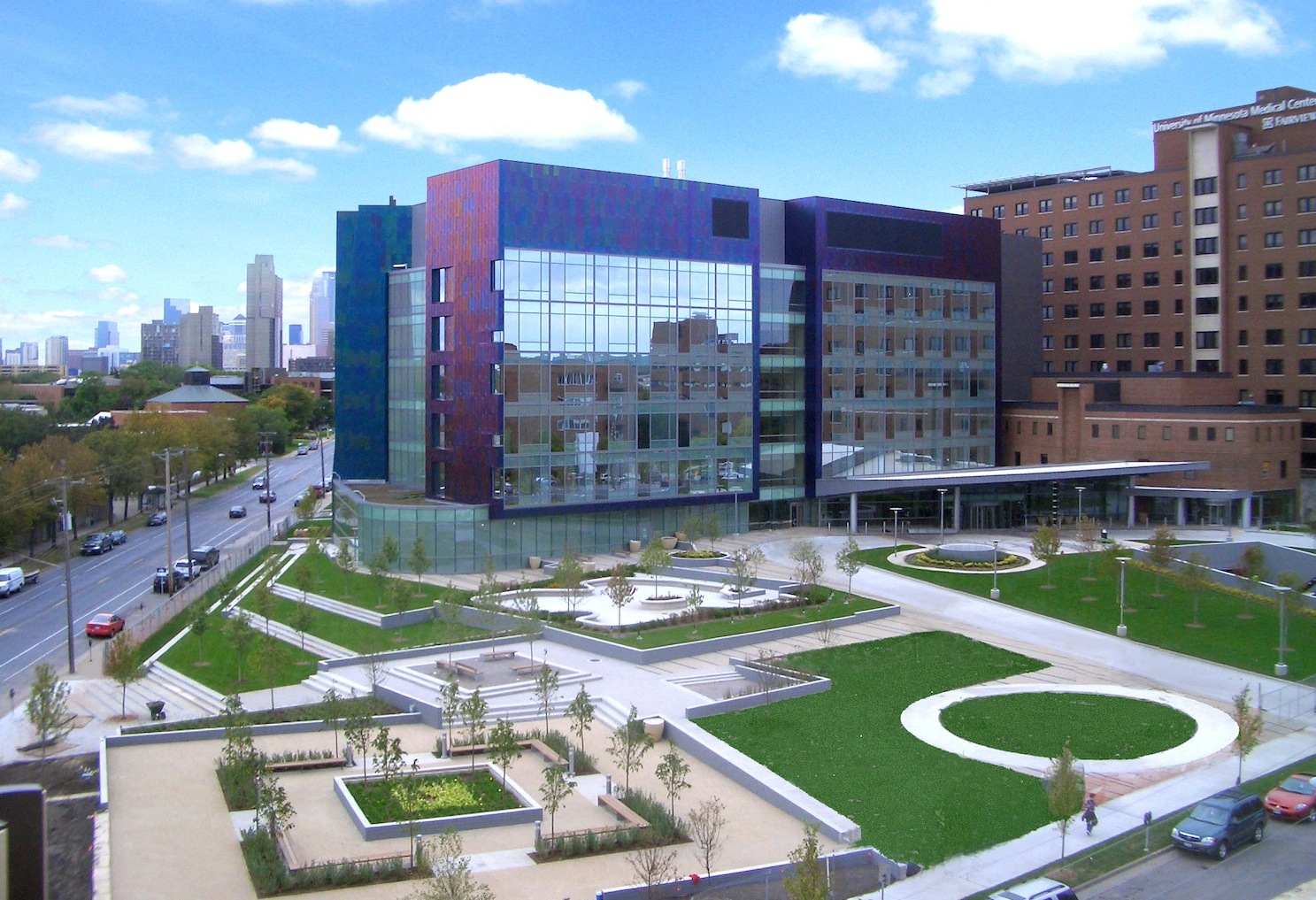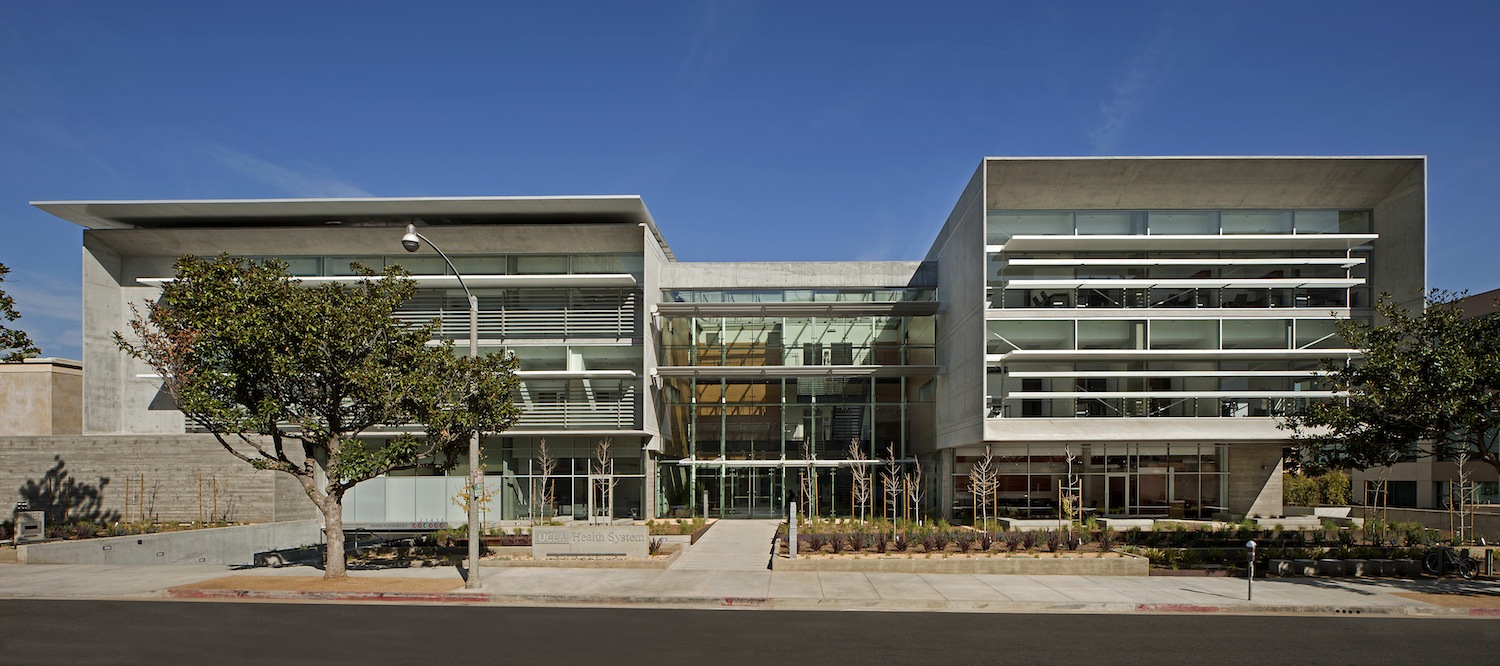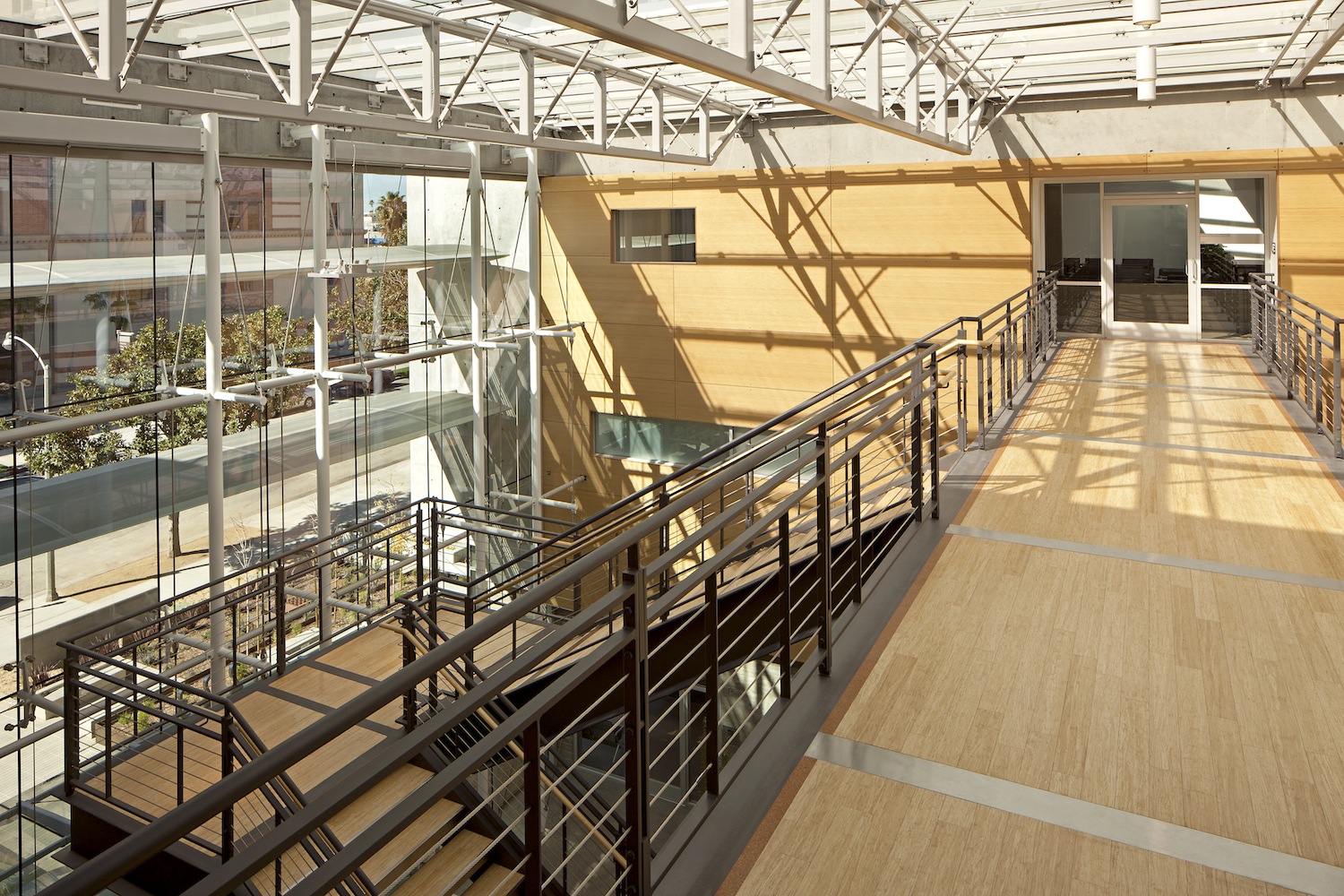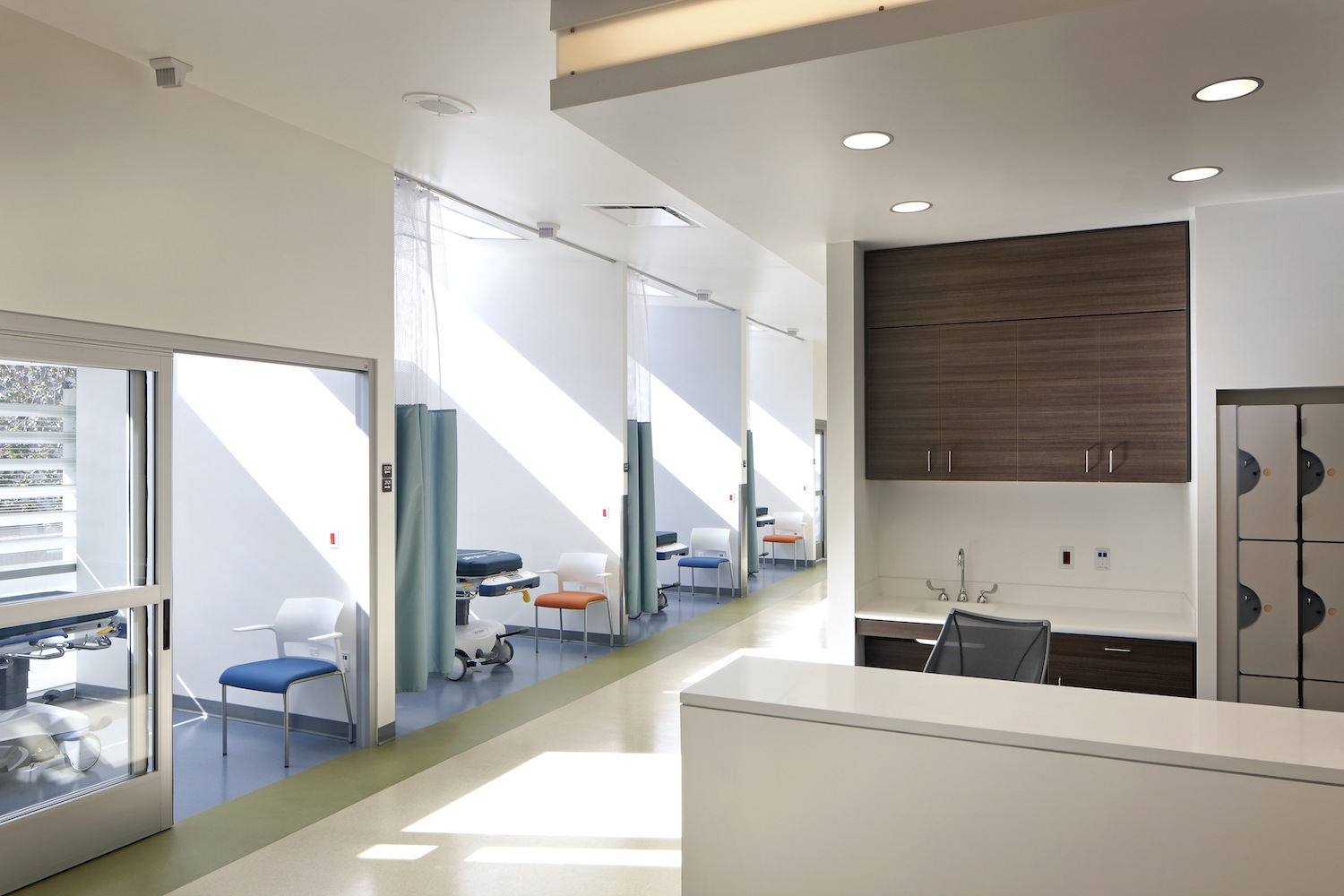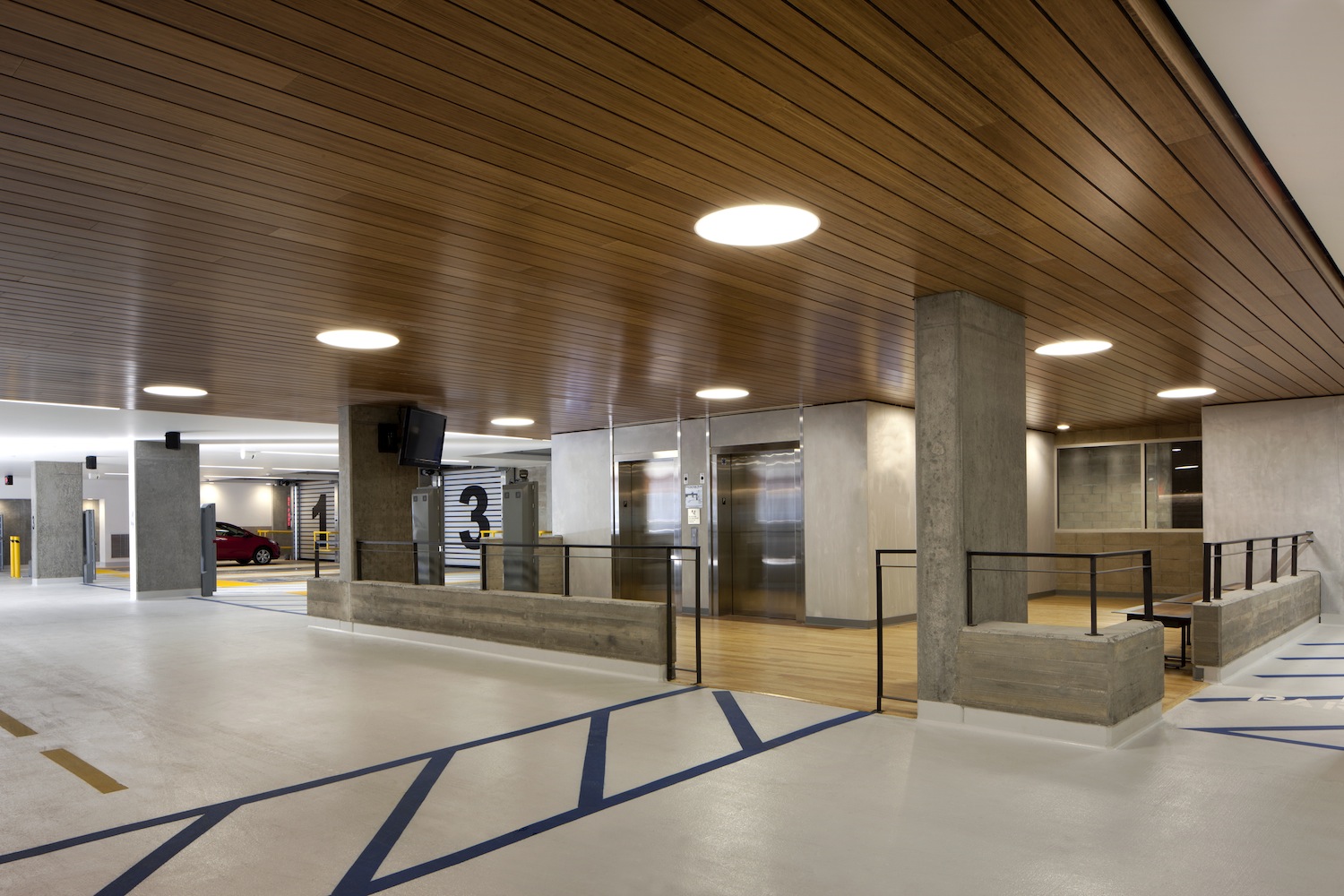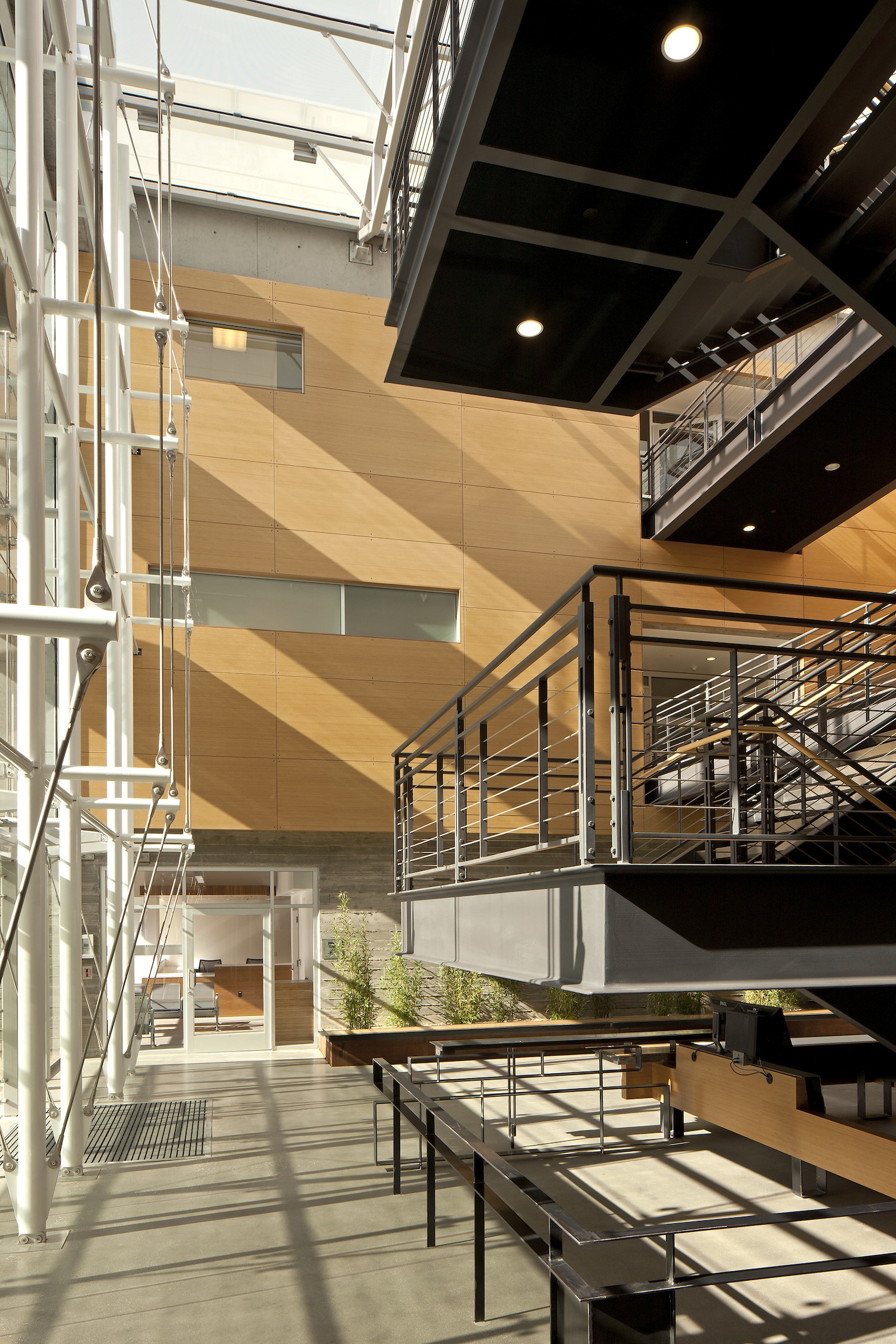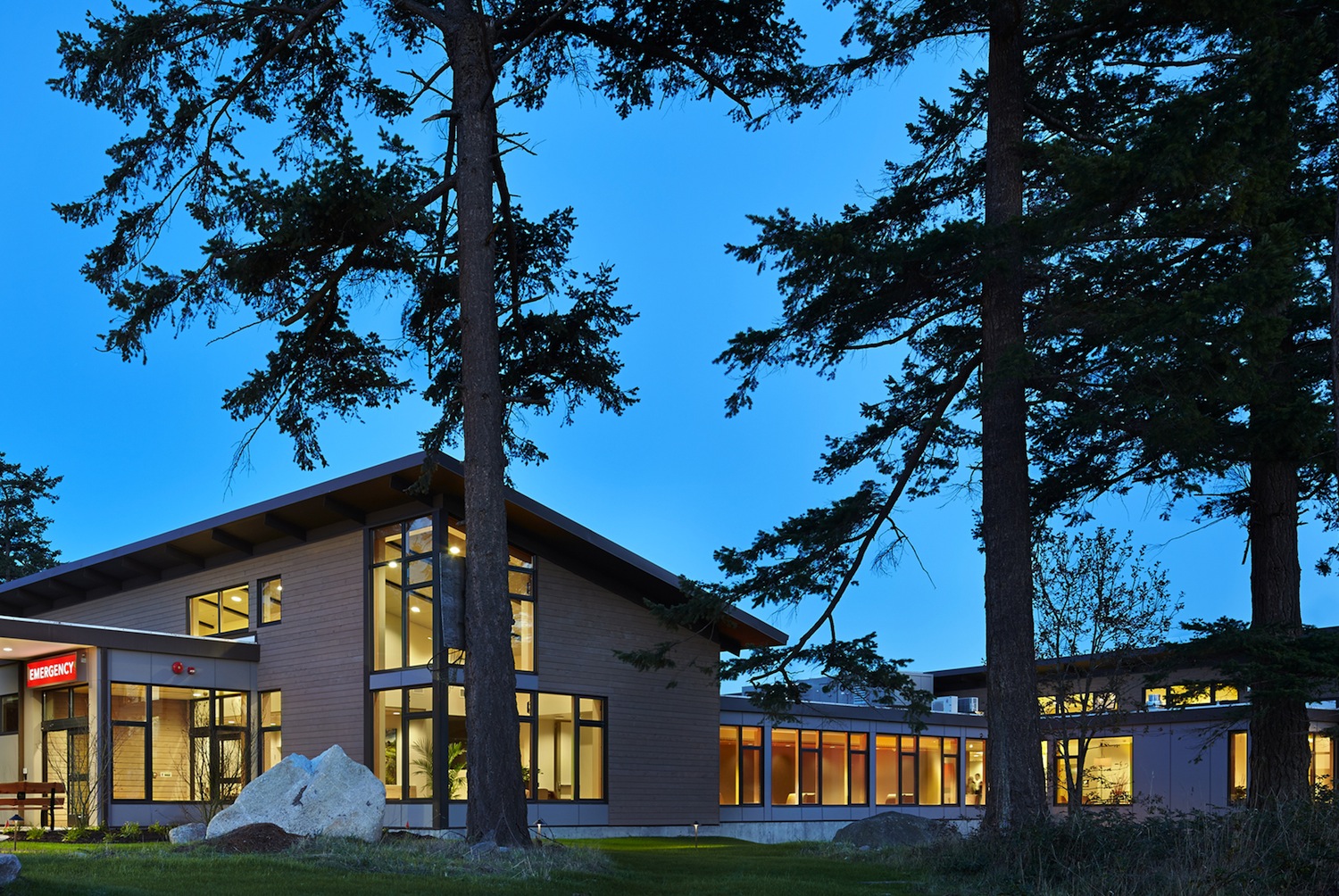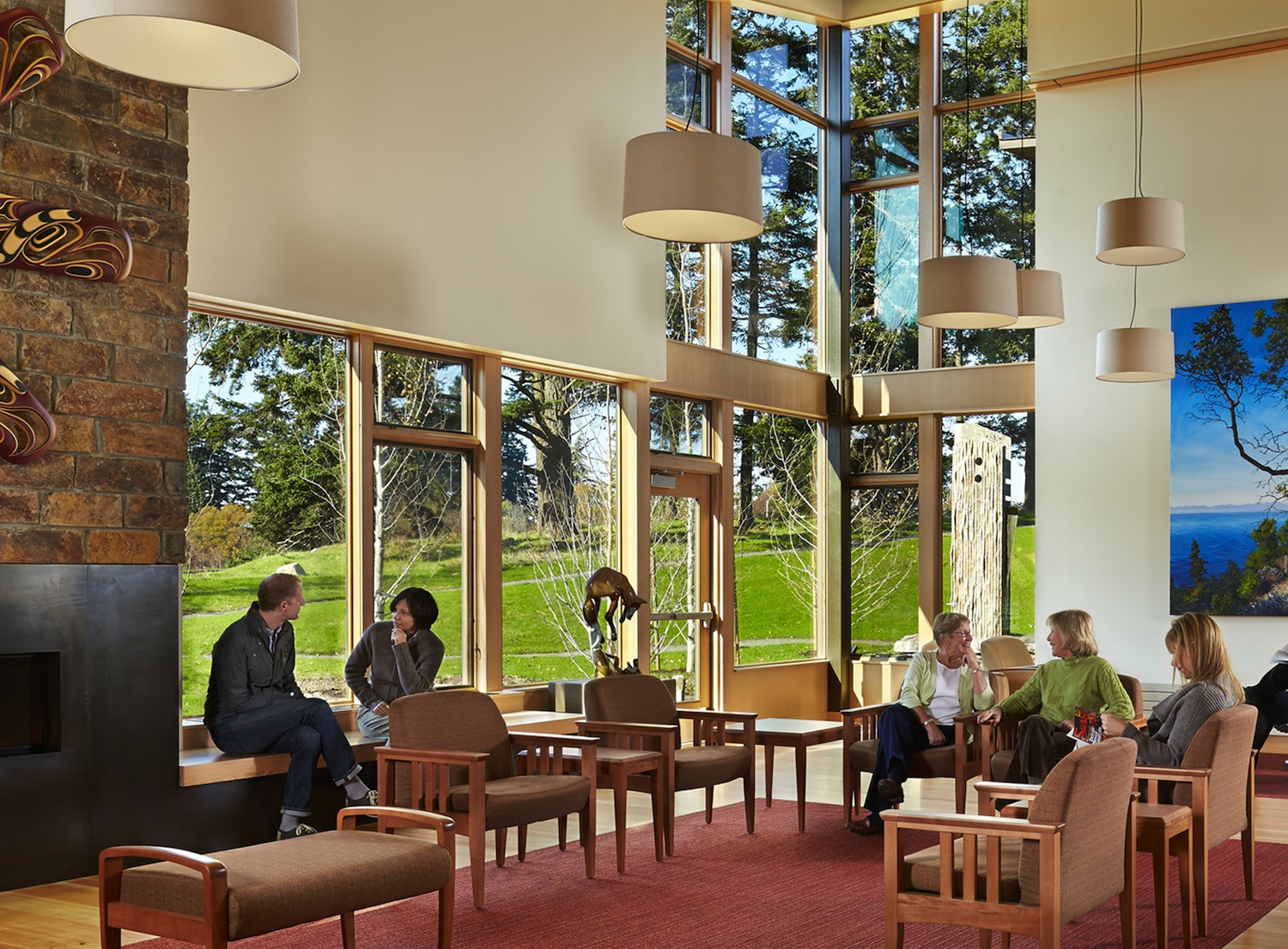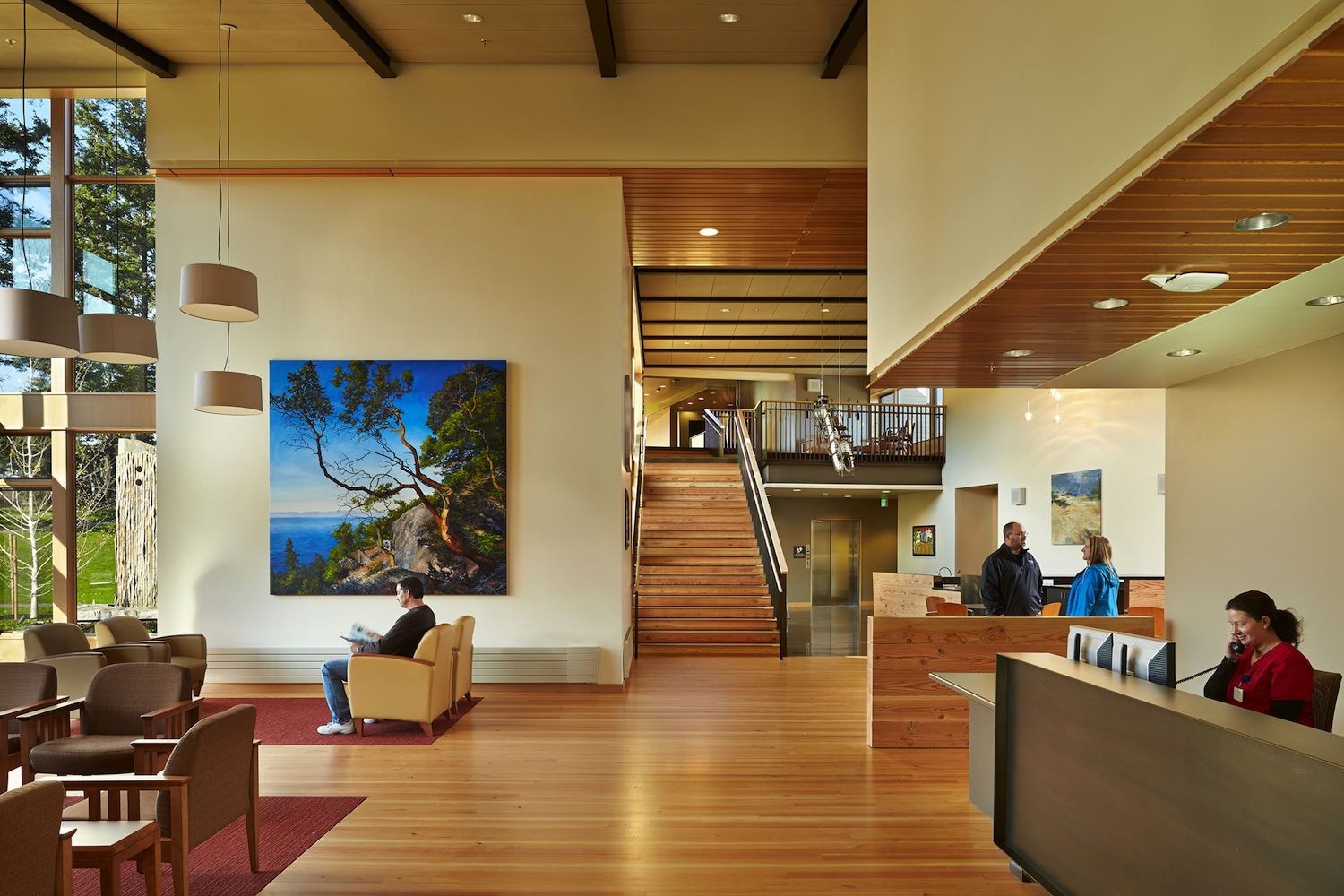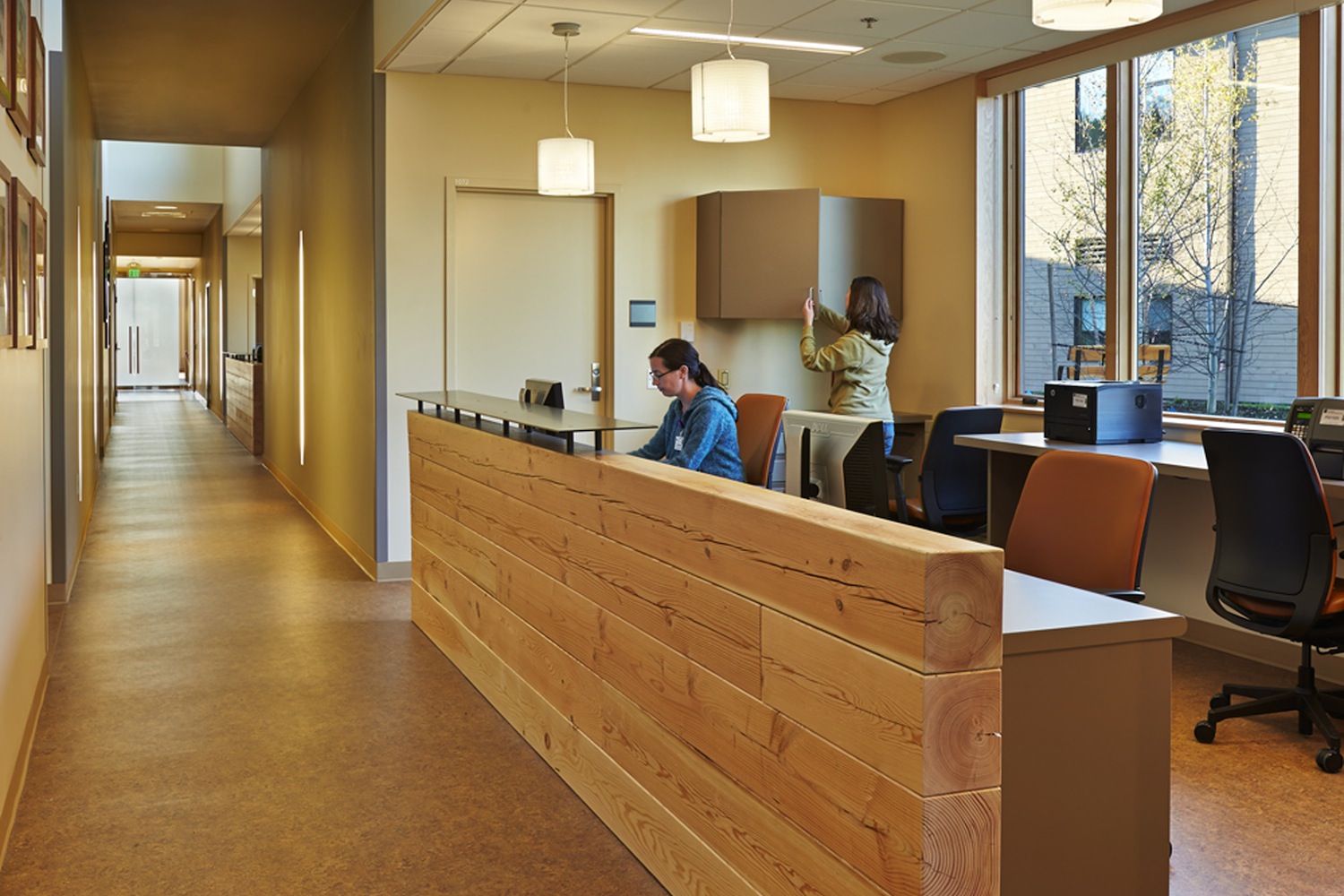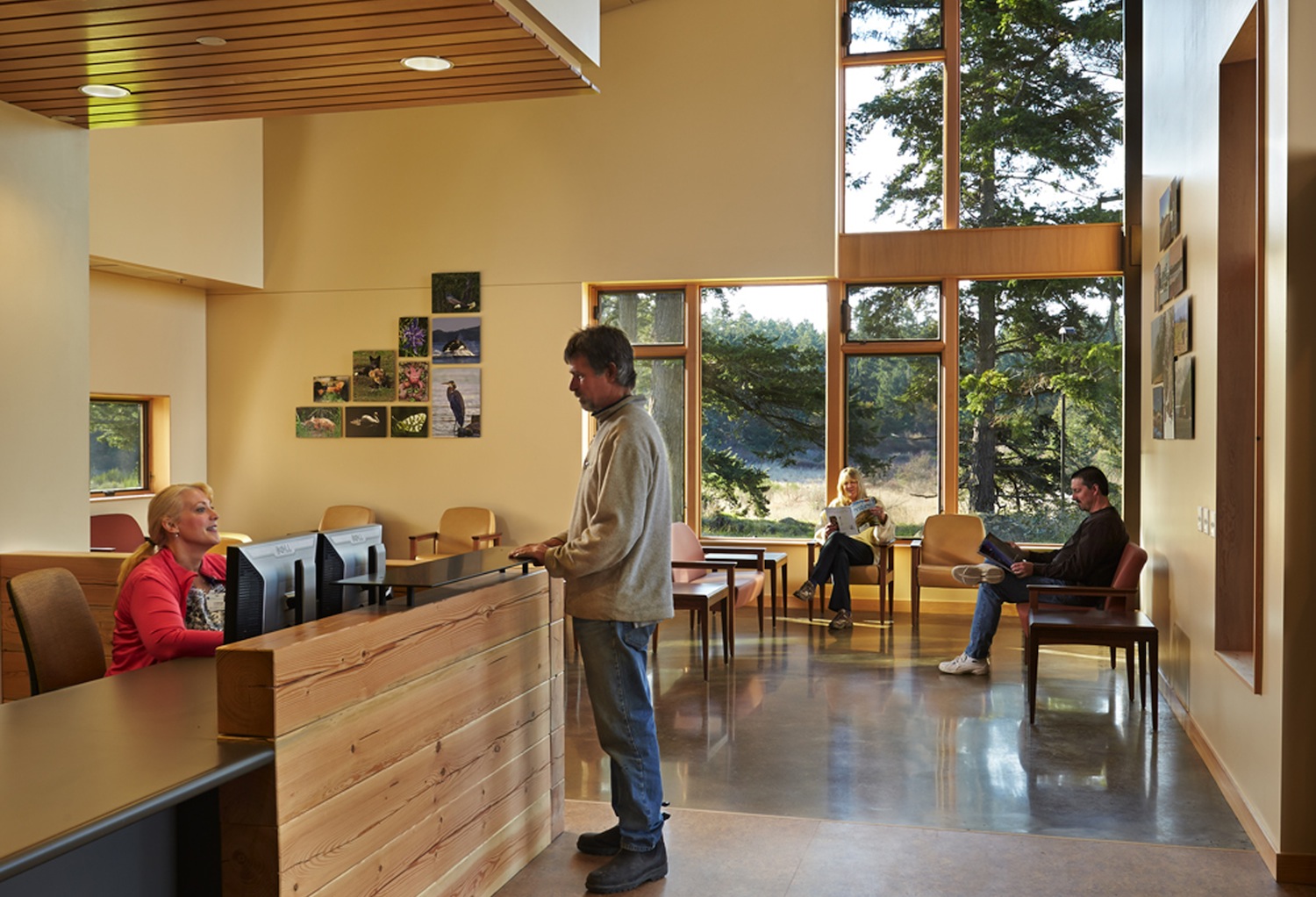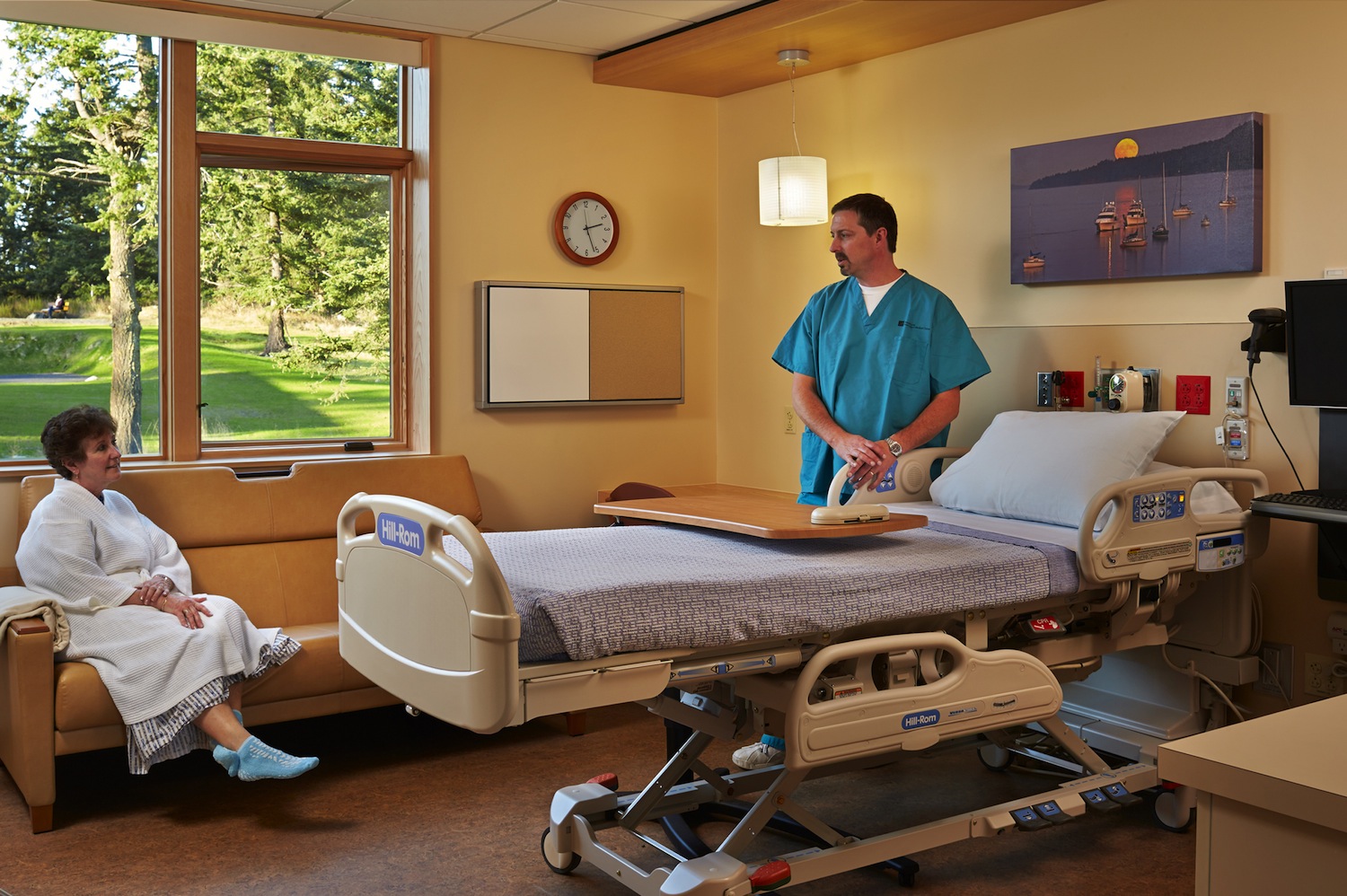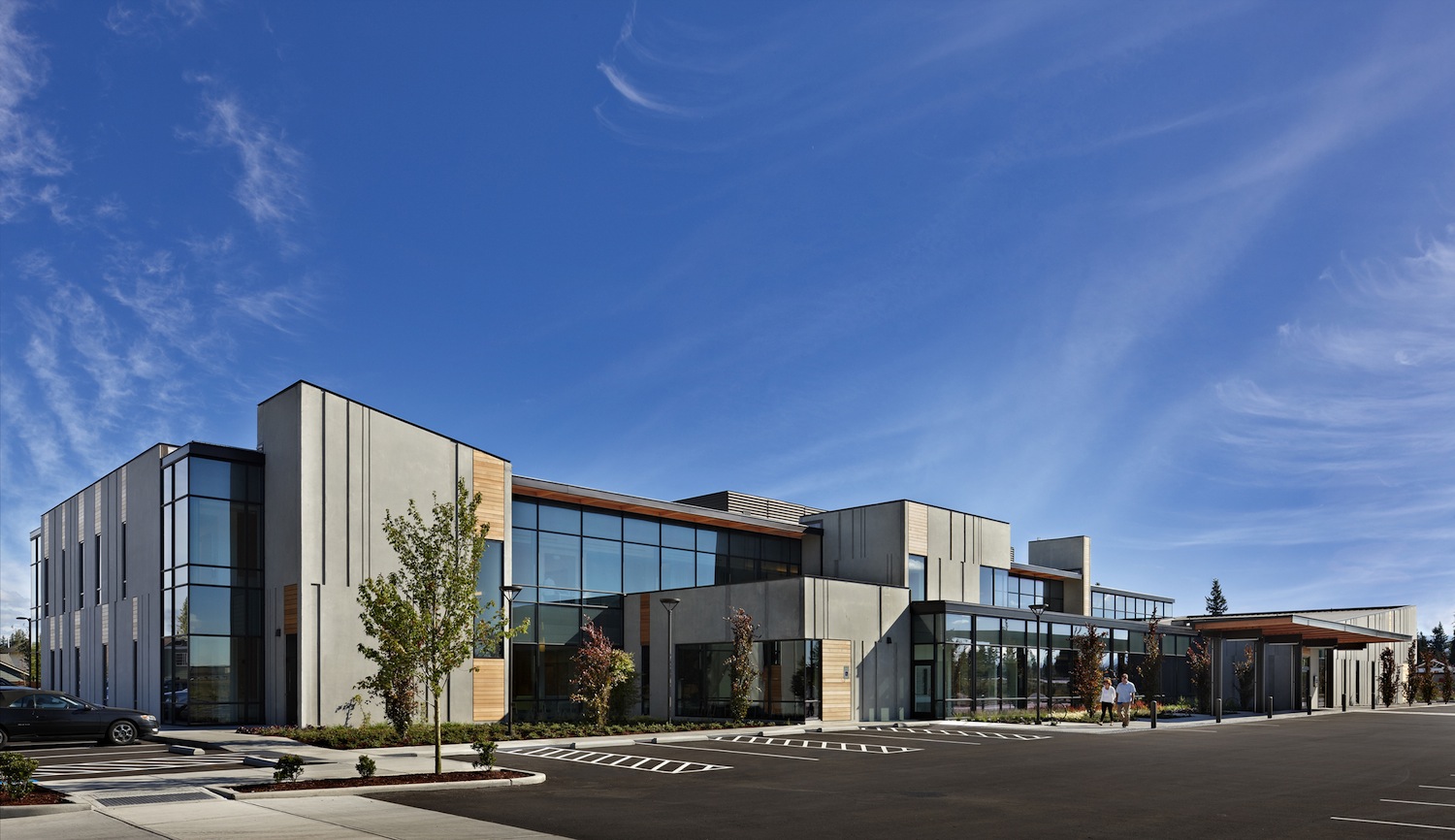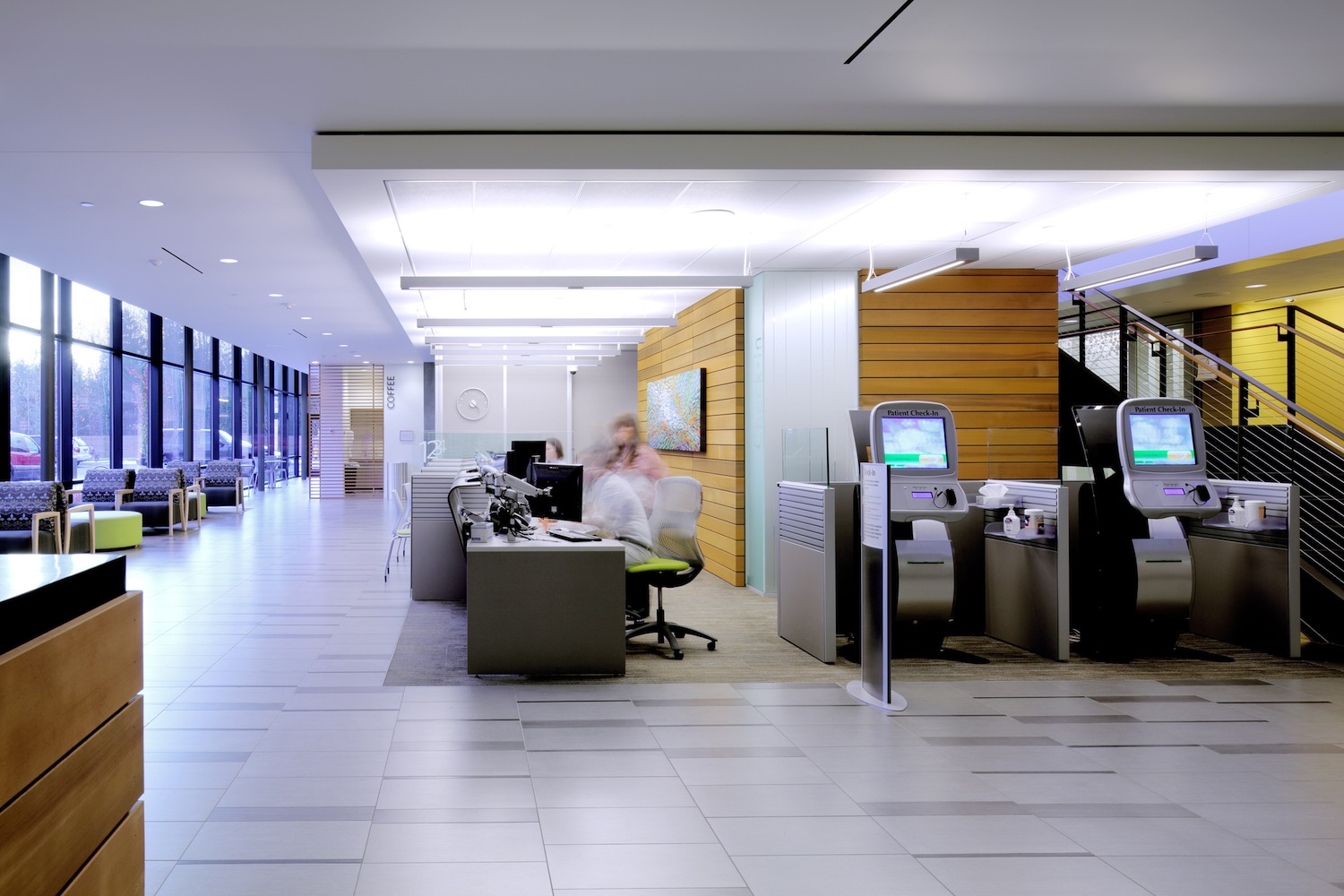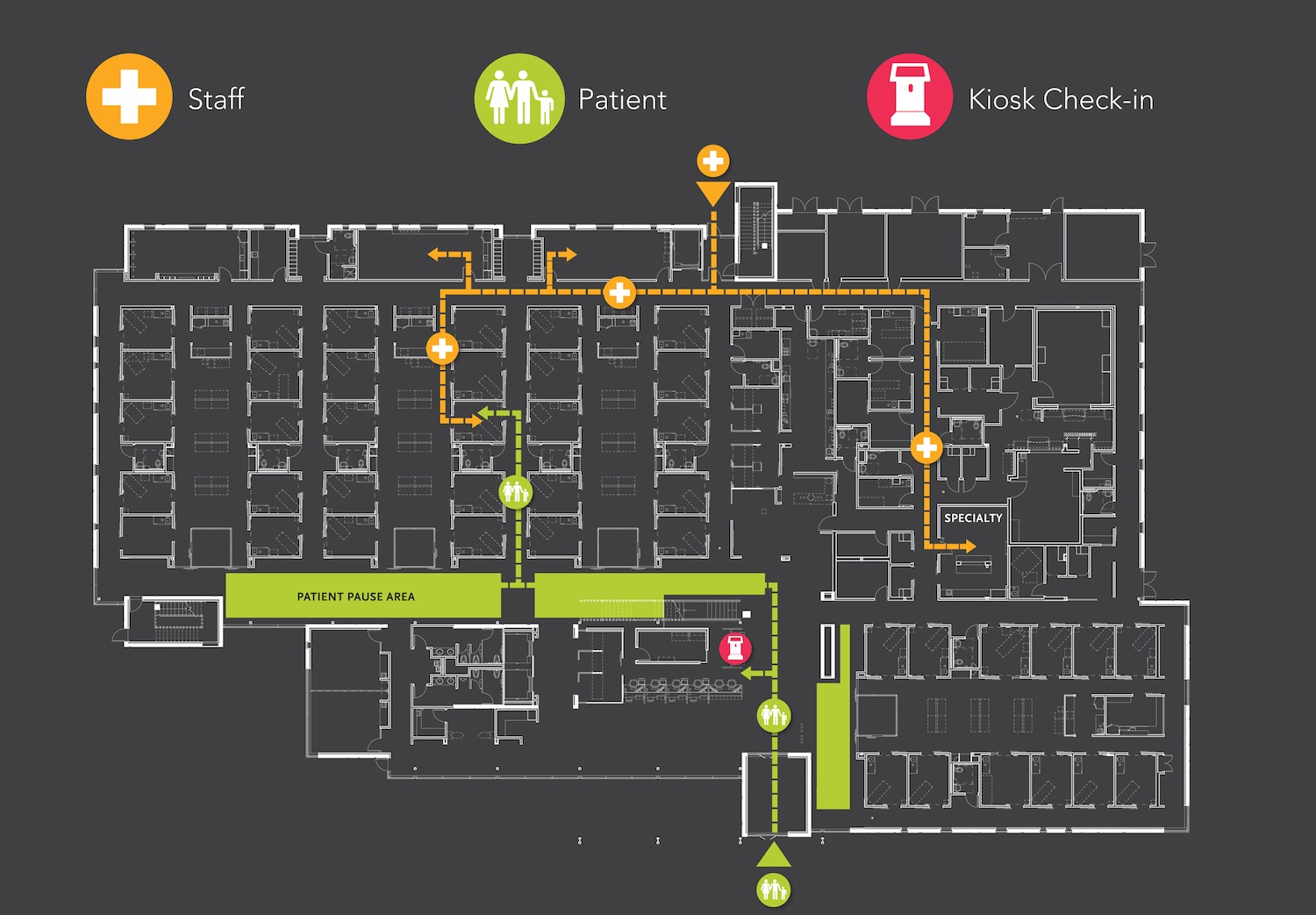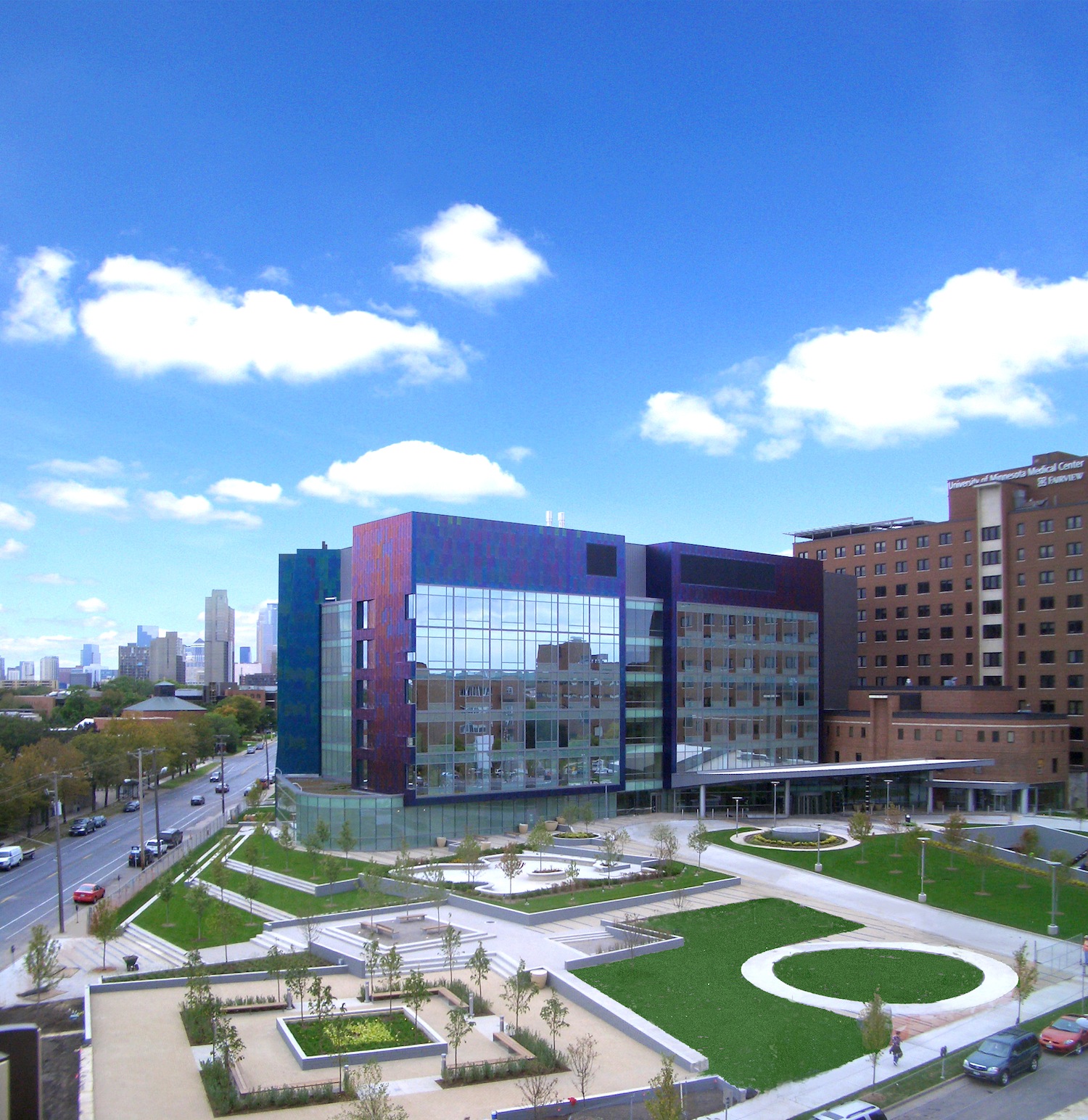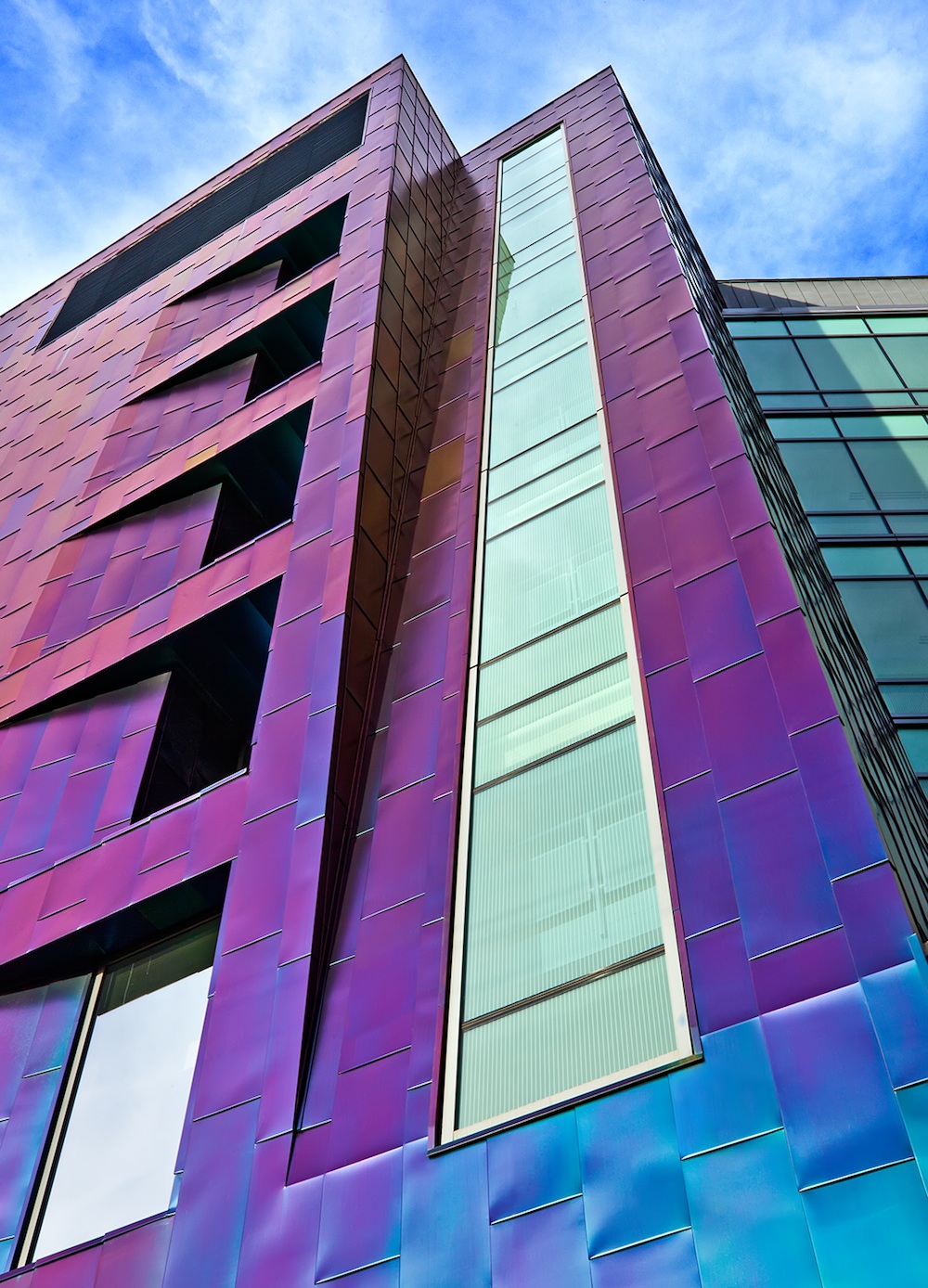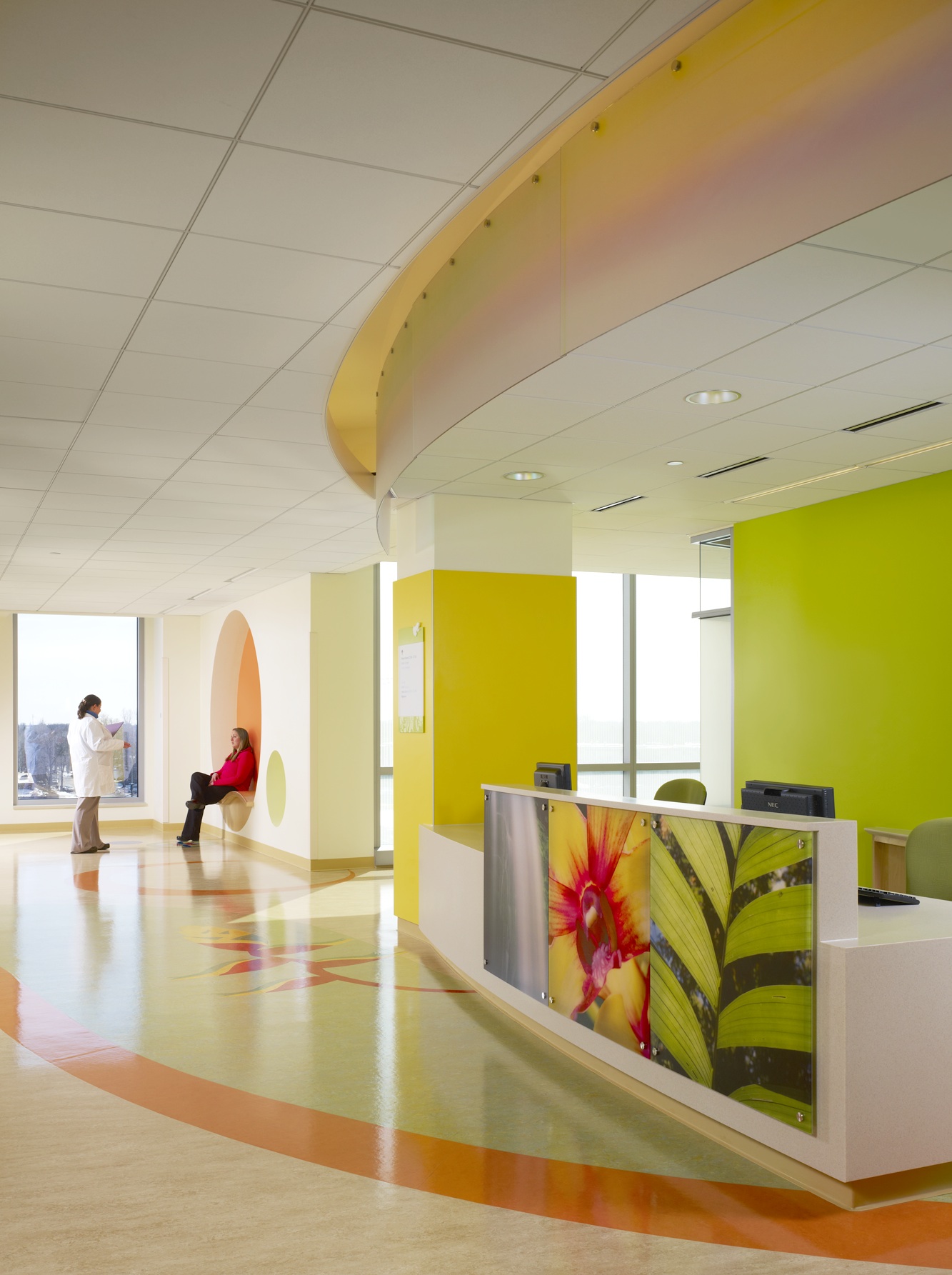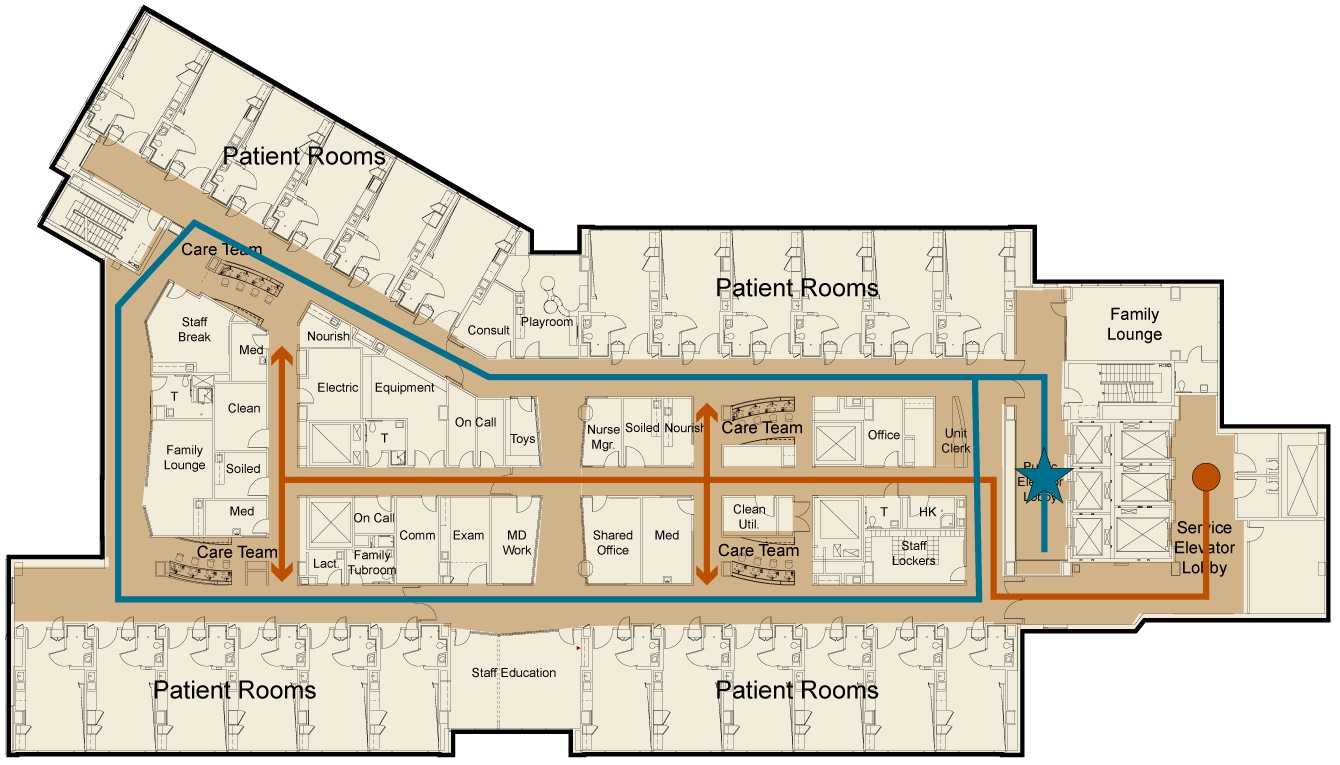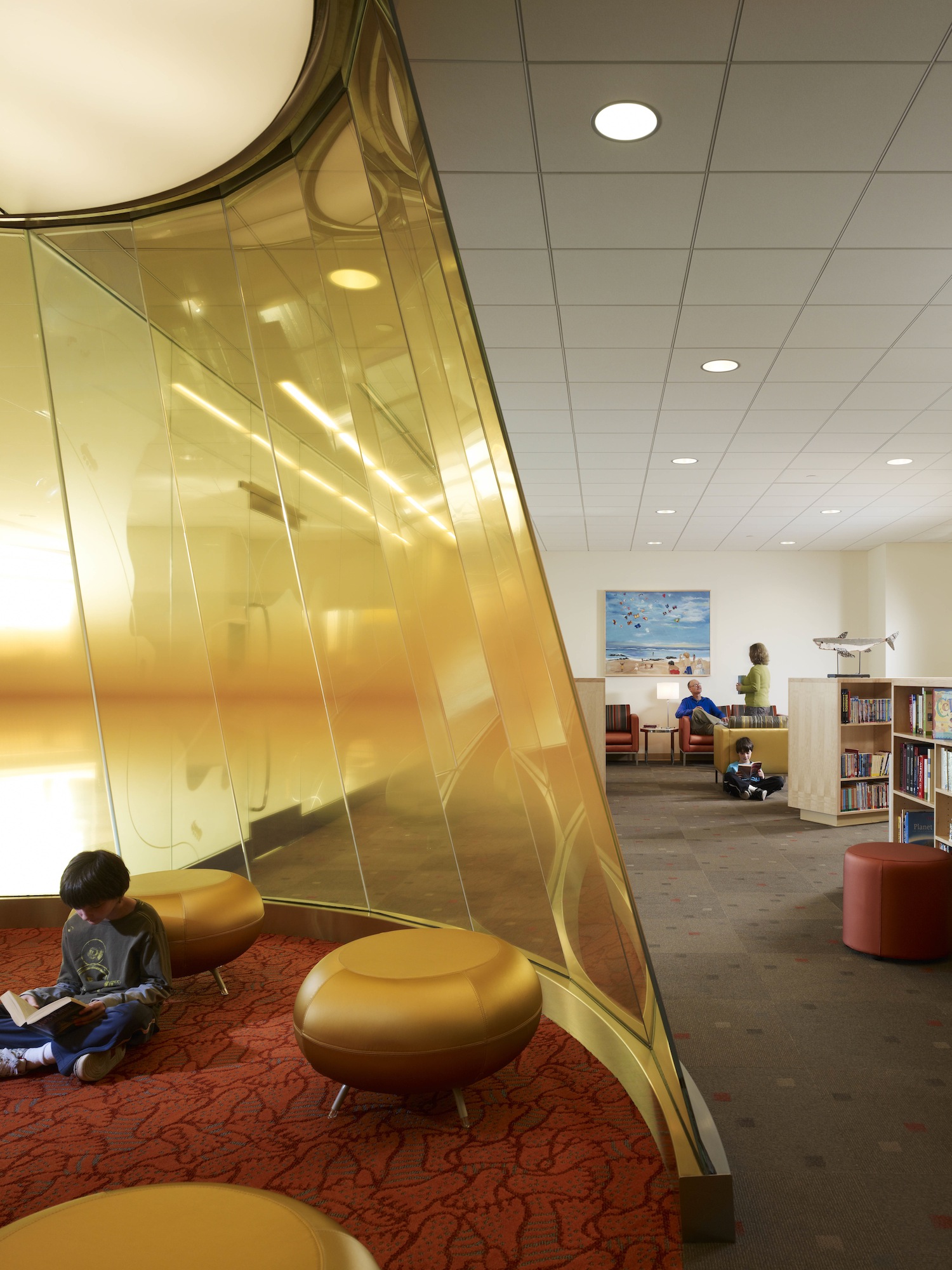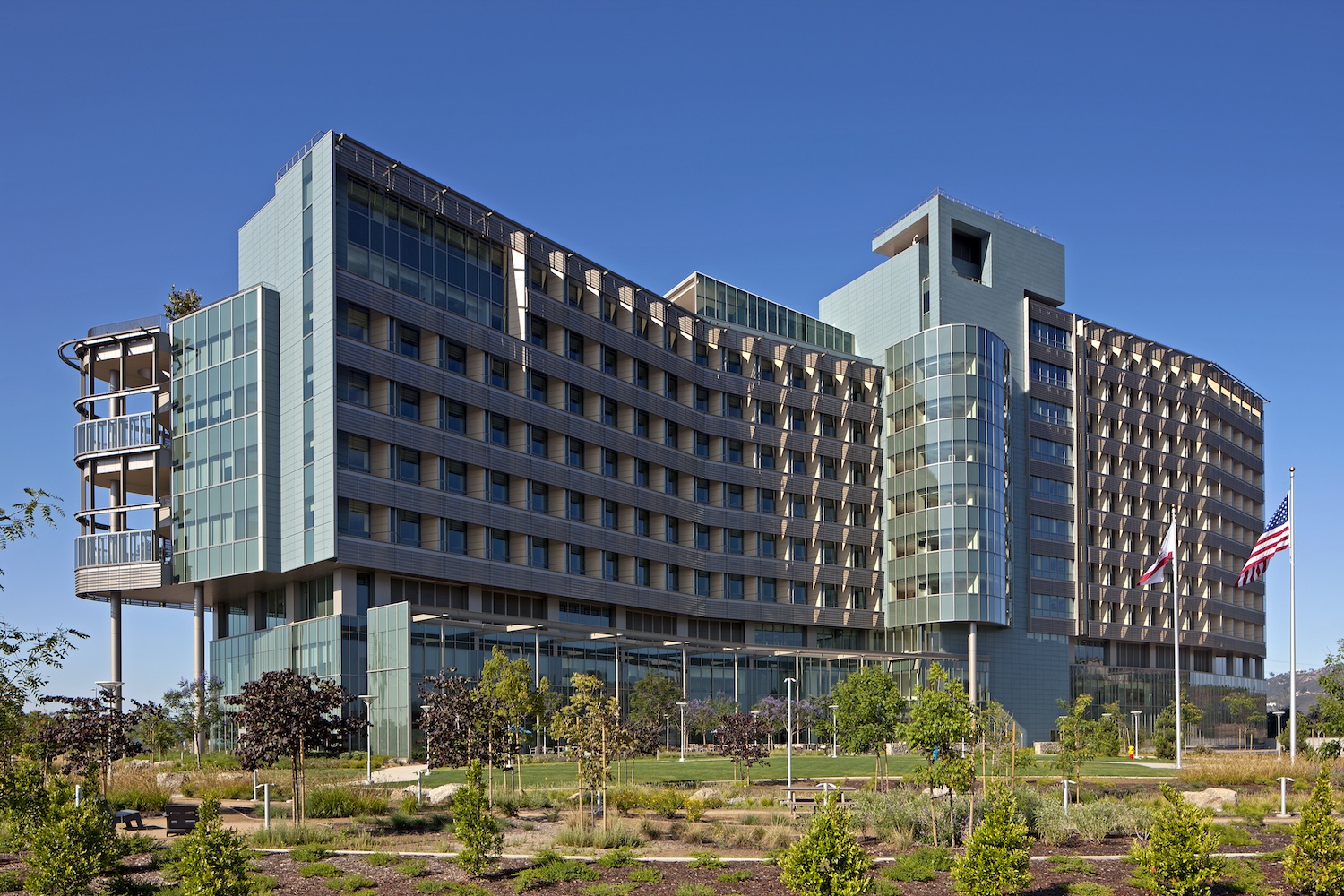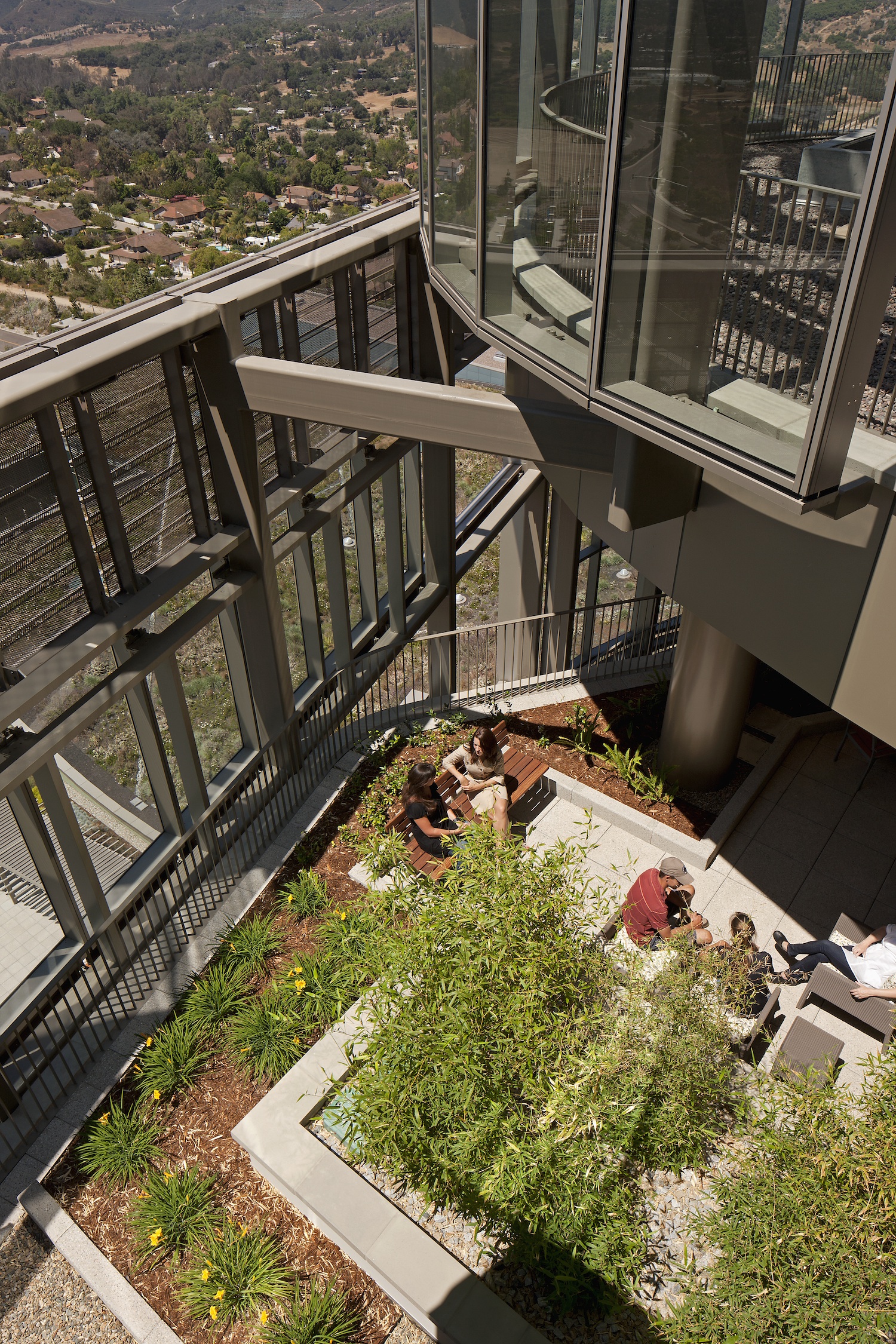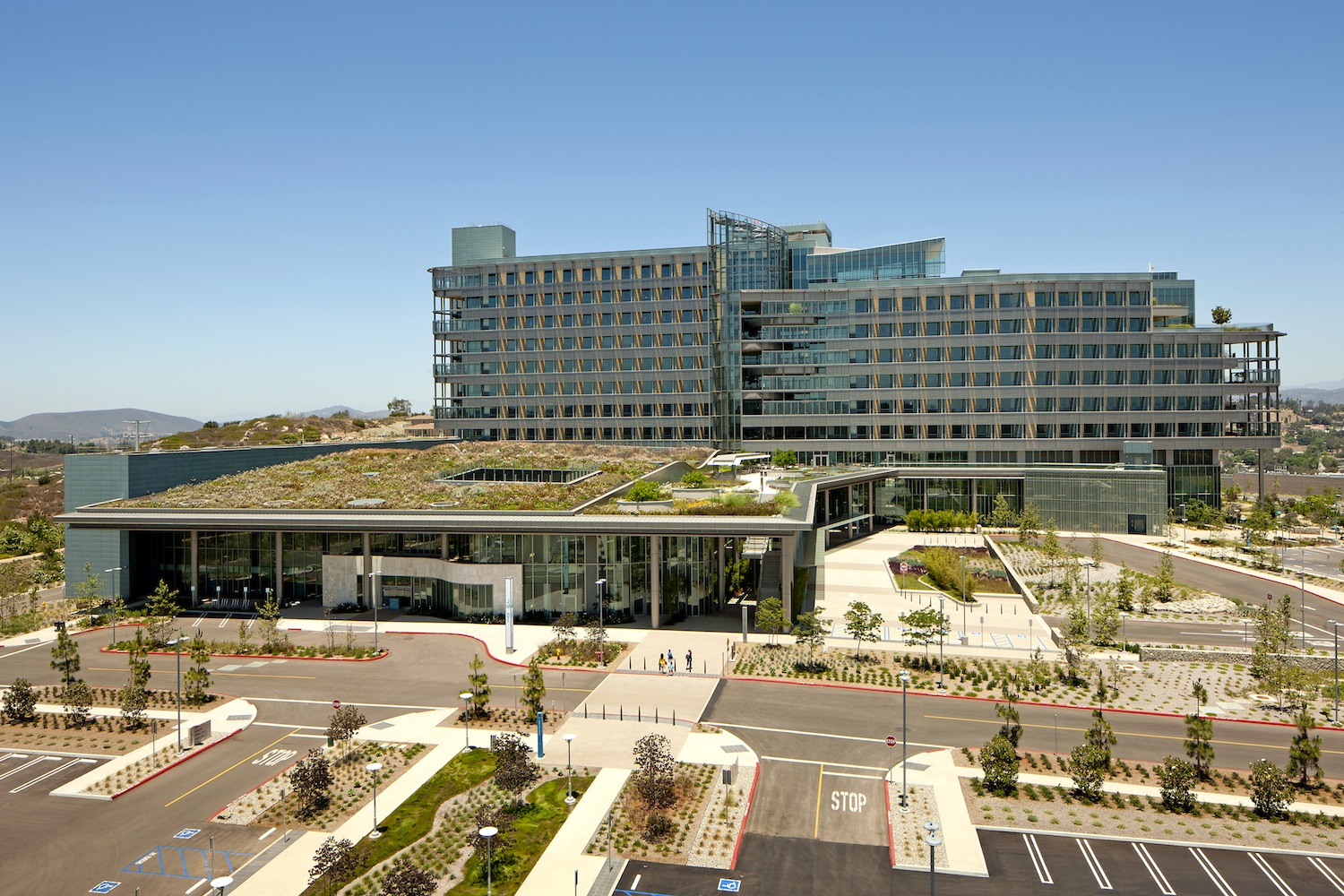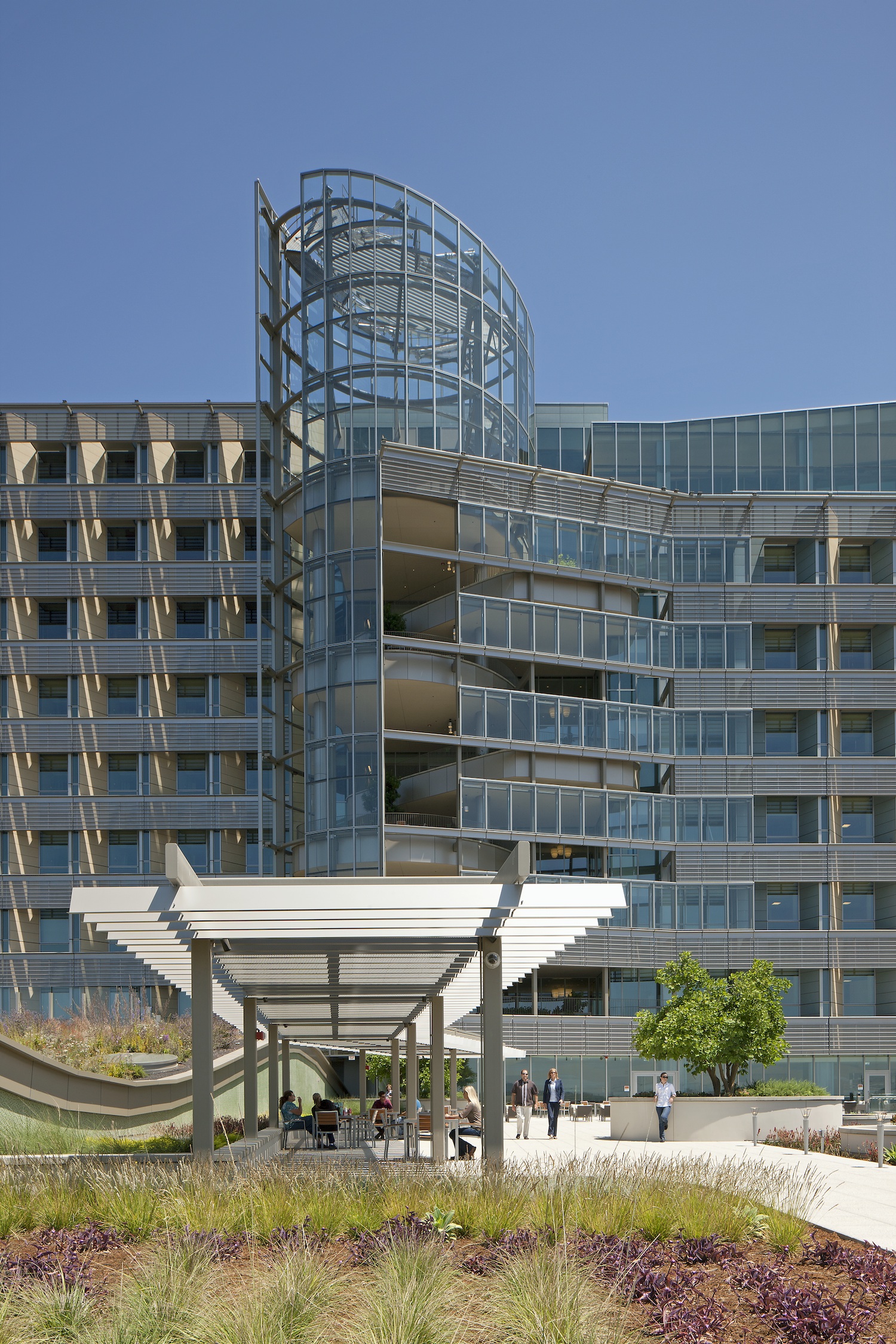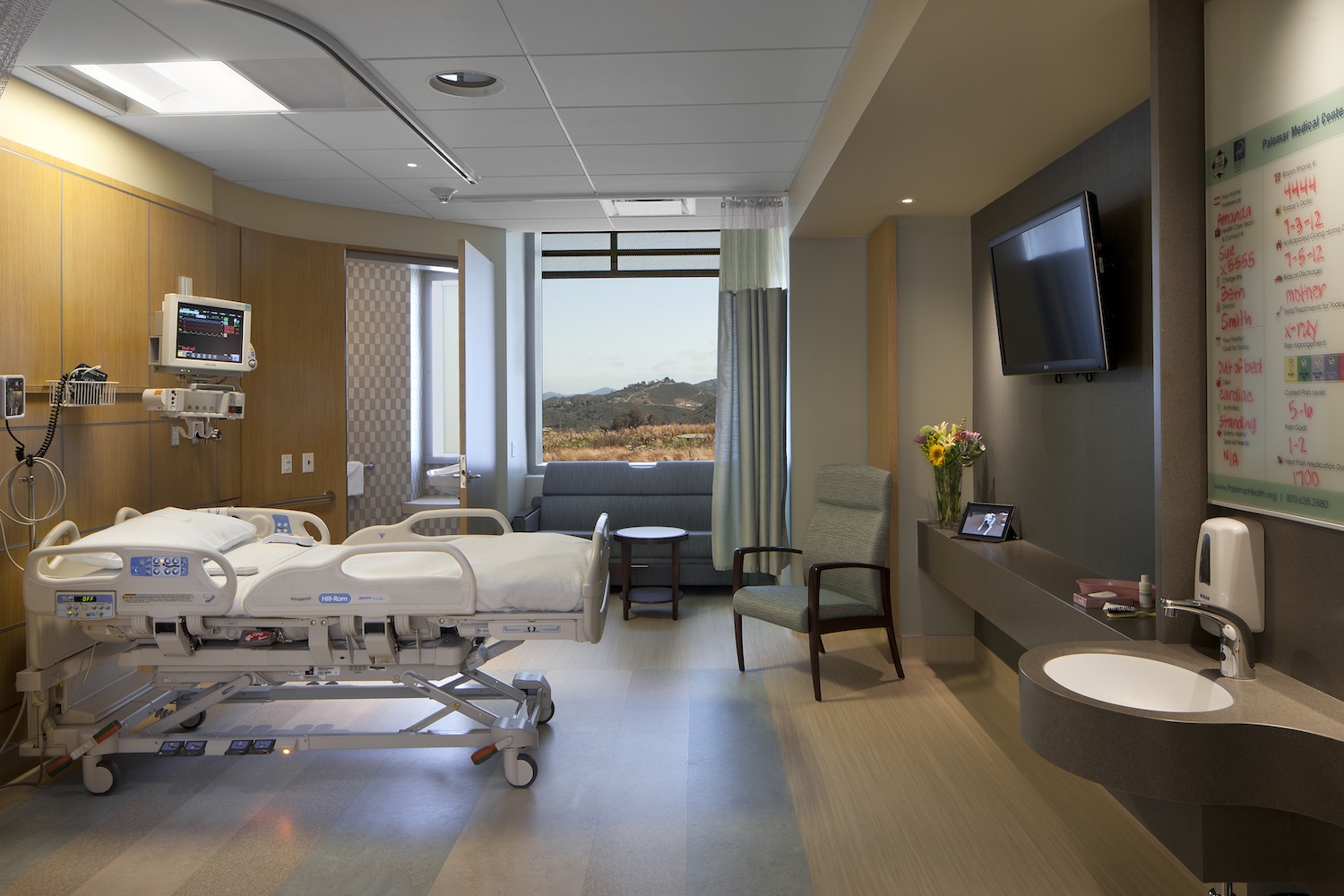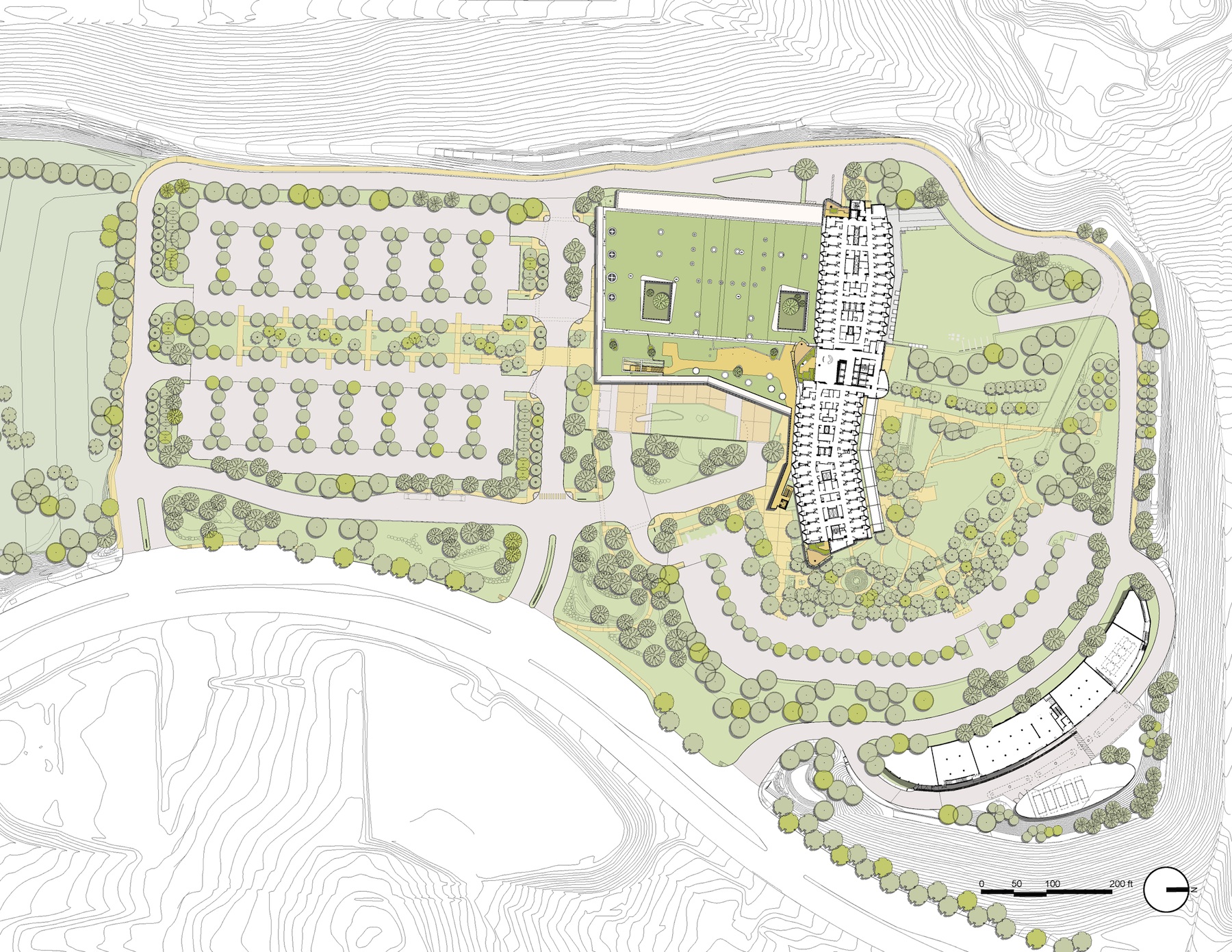Category A: Built, Less than $25 million in construction cost
1. UCLA Outpatient Surgery and Oncology Center; Santa Monica, California
Michael W. Folonis Architects
This outpatient surgery, oncology treatment and medical office facility asserts that a more-natural and less-clinical environment promotes healing in patients and productive behavior in medical staff. The architects sought the maximum inclusion of natural lighting and ventilation, and an enhanced indoor-outdoor connection. The design concept is inspired by the belief that principles of Modernism are the ideal means to realize the high standards of sustainability in healthcare design. The design achieves an aesthetic ideal, while delivering a patient-focused healing environment, the utility required by the owner, and the requirements for Gold LEED certification. This is the only project to win AIA-AAH Awards in both on-the-boards and built categories. Photos: Tom Bonner
2. Peace Island Medical Center; Friday Harbor, San Juan Island, Washington
Mahlum
Peace Island Medical Center began with a remote island community uniting to realize their vision of rural healthcare in the San Juan Islands. The hospital melds discreetly into the old-growth forest, basalt slopes and wetlands. Island resources are extremely limited, making sustainable choices fundamental. Naturally ventilated clinical areas and patient rooms connect occupants with fresh air and drive down energy use. The design reflects the values of the caregivers and community, embodying humility, environmental sensitivity and innovation. The Living Building Challenge served as a roadmap for sustainable initiatives, decoupled mechanical systems, greatly reduced potable water use and minimal energy use. Photos: Courtesy Mahlum
3. Adamsville Regional Health Center; Atlanta
Stanley Beaman & Sears
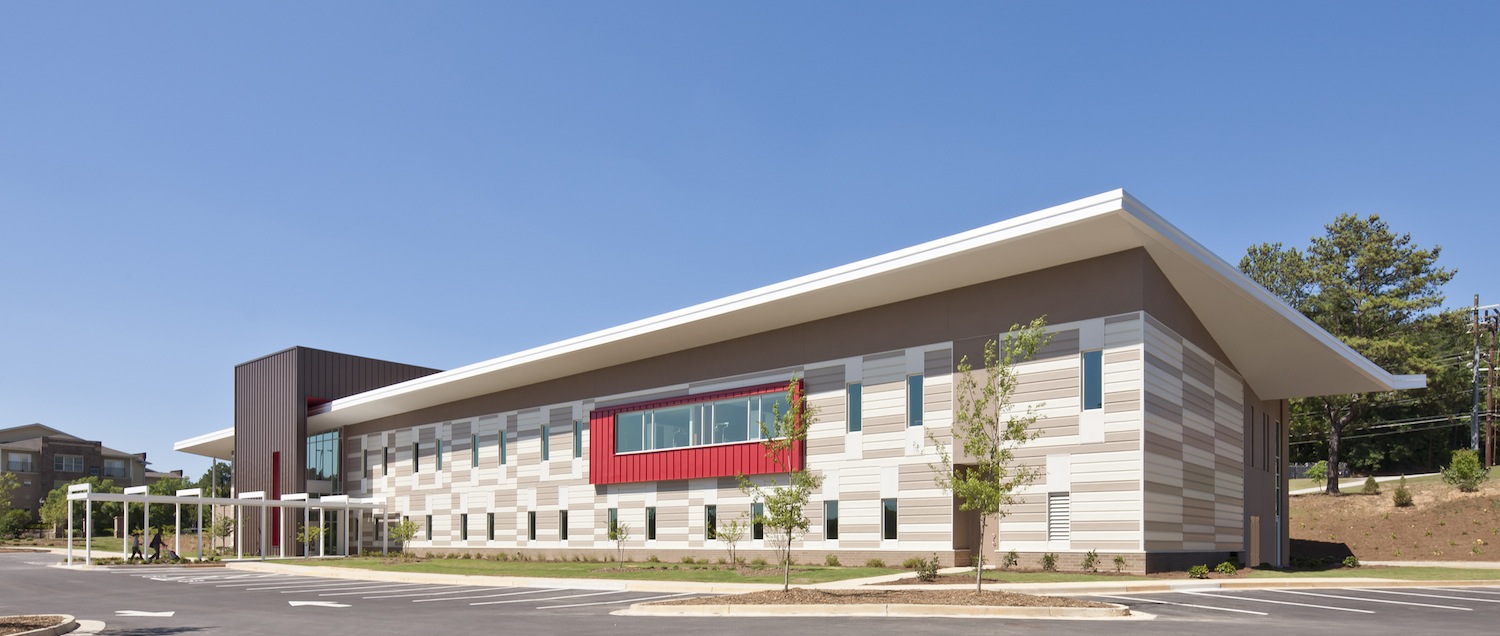
The 34,000-square-foot building houses a primary care clinic, a behavioral health clinic, childcare facilities, a dental clinic and a workforce community center. The co-location of these functions led the design team to consider the communal folk art of quilting and inspiration also came from the constructed paintings of contemporary Atlanta artist Radcliffe Bailey, who pieces together found objects, archival photographs and historic imagery with jazz-like effects. The design-build, fast-track project was completed, from start to finish, in 275 days. It required coordinating the participation of multiple stakeholders including the City of Atlanta and Fulton County governments, the contracting firm Whiting-Turner, Fulton County Board of Commissioners Vice Chair Emma Darnell, the Fulton County Office of Cultural Affairs, the staff of West End Medical Center and residents of the Adamsville neighborhood. Photos: Jonathan Hillyer
4. The Everett Clinic Smokey Point Medical Center; Smokey Point, Washington
ZGF Architects LLP
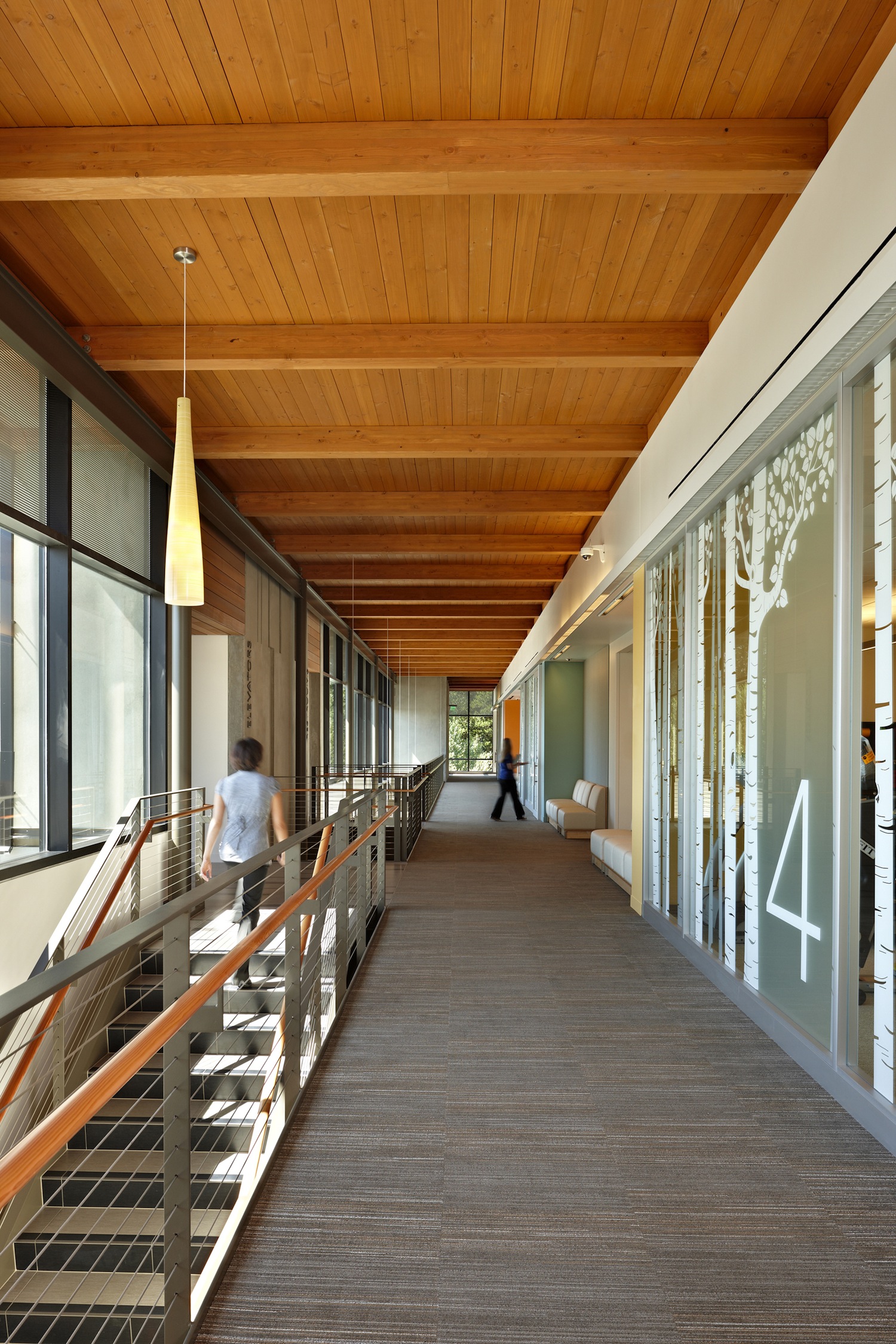
Photo: Benjamin Benschneider
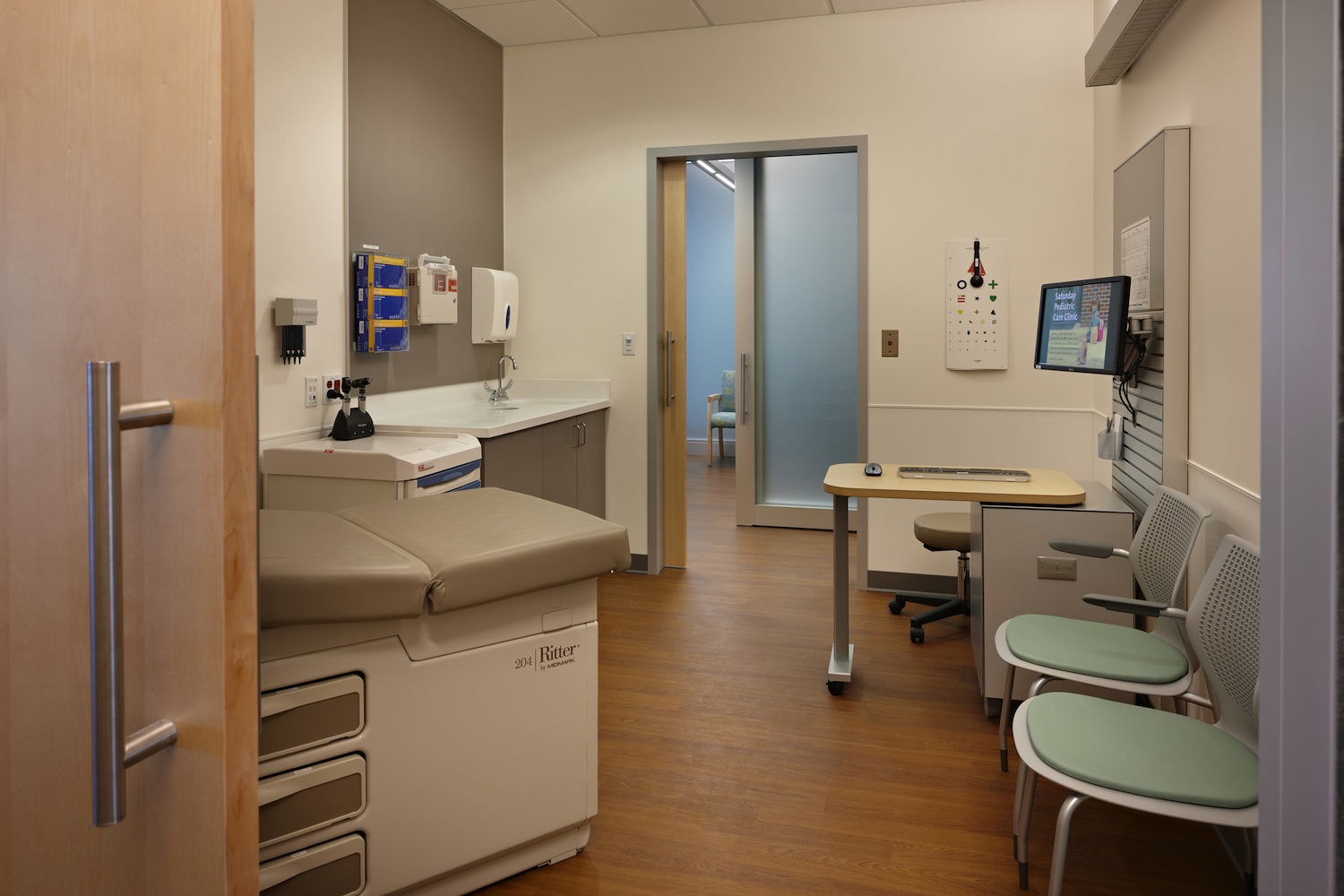
Photo: Doug Scott
Category B: Build, More than $25 million in construction cost
5. University of Minnesota Amplatz Children’s Hospital; Minneapolis, Minnesota
Tsoi/Kobus & Associates
The University of Minnesota Amplatz Children’s Hospital started with a vision: to create the ideal environment in which to provide and receive children’s healthcare. Today, the hospital is setting new standards for safety, comfort, and clinical efficiency. The six-story building consolidates the pediatric programs and inpatient units. It includes 96 same-handed, private inpatient rooms, a sedation/observation unit, dialysis unit, pediatric emergency department, an expansion of the existing imaging department and surgical suite, family resource center, gift shop, and underground parking. The building creates a distinctive identity for the hospital, immediately engaging visitors with its bright and playful exterior of multi-colored stainless steel panels. An interactive interior design theme, “Passport to Discovery,” enlivens the interior, aids in wayfinding, and offers opportunities for diversion and discovery. Photos: Nick Merrick, Hedrich Blessing; Drawings: TK&A
6. Palomar Medical Center; Escondido, California
CO Architects
Nationally recognized for its innovative approach to sustainable design, healing environments and technical execution, Palomar Medical Center is the first phase of development of a new 35-acre campus that includes the 360-bed acute-care hospital and a new central plant. Innovations in medical planning and architectural design meet the project goals of improving access to care, improving operational efficiencies, and creating sustainable, high-performance healing environments. Design strategies incorporate garden spaces at every level of the 11-story nursing tower, and utilize green-roof technology that extends the landscape and improves views from the patient rooms. The design includes a full complement of water conservation, air quality, and energy-saving measures. Photos: Tom Bonner
CONTINUE ARTICLE (READ ABOUT PROJECTS #7-12)
Related Stories
| Aug 11, 2010
Balfour Beatty agrees to acquire Parsons Brinckerhoff for $626 million
Balfour Beatty, the international engineering, construction, investment and services group, has agreed to acquire Parsons Brinckerhoff for $626 million. Balfour Beatty executives believe the merger will be a major step forward in accomplishing a number of Balfour Beatty’s objectives, including establishing a global professional services business of scale, creating a leading position in U.S. civil infrastructure, particularly in the transportation sector, and enhancing its global reach.
| Aug 11, 2010
Construction unemployment rises to 17.1% as another 64,000 construction workers are laid off in September
The national unemployment rate for the construction industry rose to 17.1 percent as another 64,000 construction workers lost their jobs in September, according to an analysis of new employment data released today. With 80 percent of layoffs occurring in nonresidential construction, Ken Simonson, chief economist for the Associated General Contractors of America, said the decline in nonresidential construction has eclipsed housing’s problems.
| Aug 11, 2010
Billings at U.S. architecture firms exceeds $40 billion annually
In the three-year period leading up to the current recession, gross billings at U.S. architecture firms increased nearly $16 billion from 2005 and totaled $44.3 billion in 2008. This equates to 54 percent growth over the three-year period with annual growth of about 16 percent. These findings are from the American Institute of Architects (AIA) Business of Architecture: AIA Survey Report on Firm Characteristics.
| Aug 11, 2010
CHPS debuts high-performance building products database
The Collaborative for High Performance Schools (CHPS) made a new tool available to product manufacturers to help customers identify building products that contribute to sustainable, healthy, built environments. The tool is an online, searchable database where manufacturers can list products that have met certain environmental or health standards ranging from recycled content to materials that contribute to improved indoor air quality.
| Aug 11, 2010
ICC launches green construction code initiative for commercial buildings
The International Code Council has launched its International Green Construction Code (IGCC) initiative, which will aim to reduce energy usage and the carbon footprint of commercial buildings.Entitled “IGCC: Safe and Sustainable By the Book,” the initiative is committed to develop a model code focused on new and existing commercial buildings. It will focus on building design and performance.
| Aug 11, 2010
Green Building Initiative launches two certification programs for green building professionals
The Green Building Initiative® (GBI), one of the nation’s leading green building organizations and exclusive provider of the Green Globes green building certification in the United States, today announced the availability of two new personnel certification programs for green building practitioners: Green Globes Professional (GGP) and Green Globes Assessor (GGA).
| Aug 11, 2010
Potomac Valley Brick launches brick design competition with $10,000 grand prize
Potomac Valley Brick presents Brick-stainable: Re-Thinking Brick a design competition seeking integrative solutions for a building using clay masonry units (brick) as a primary material.


